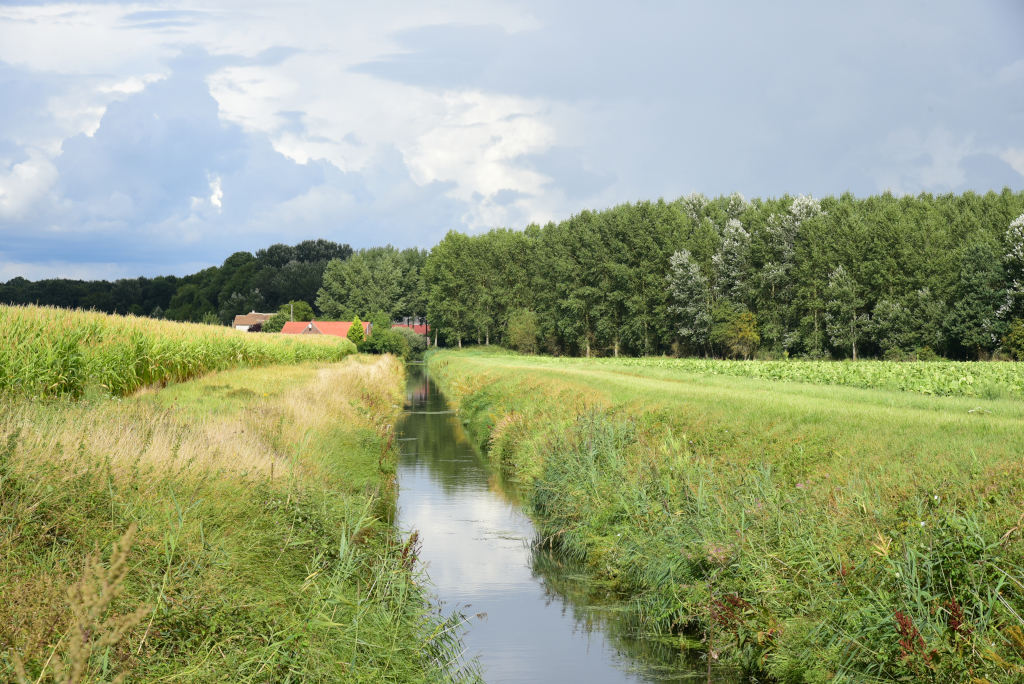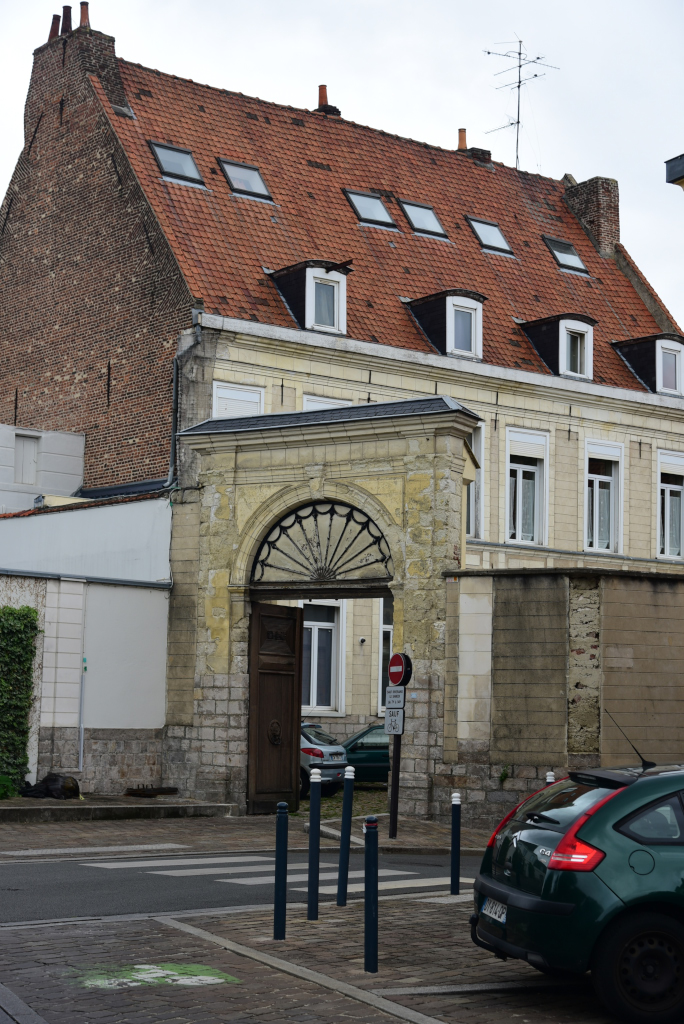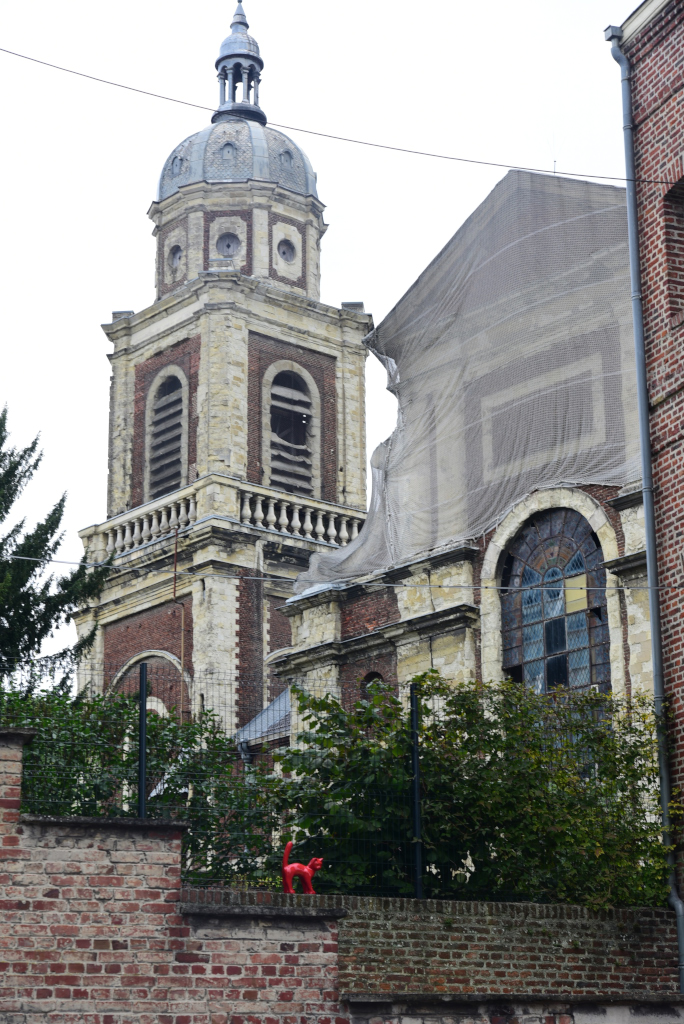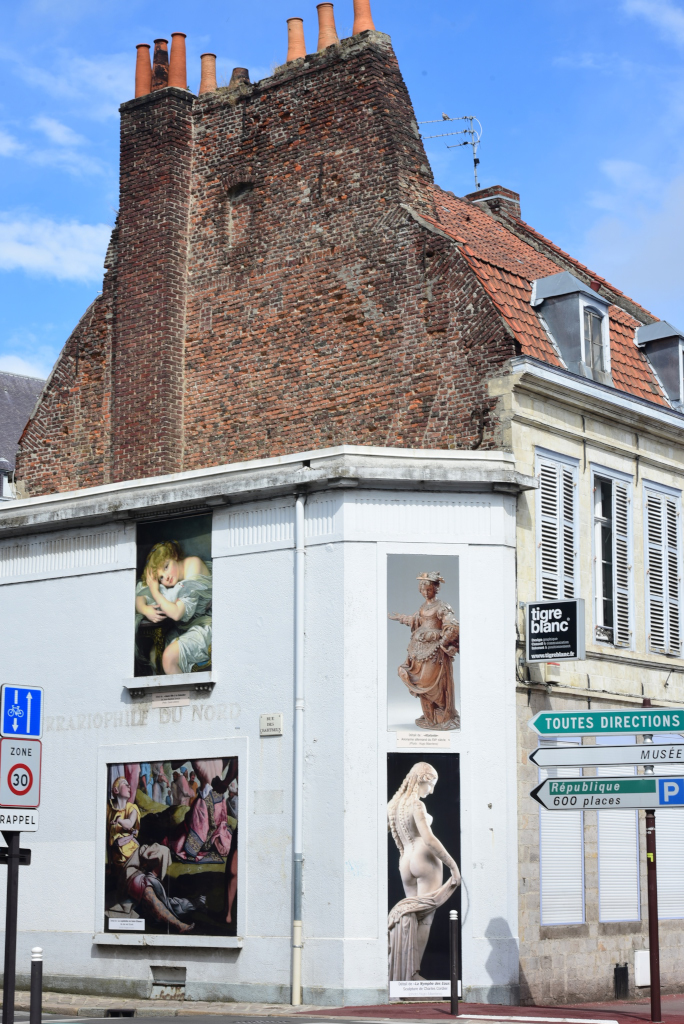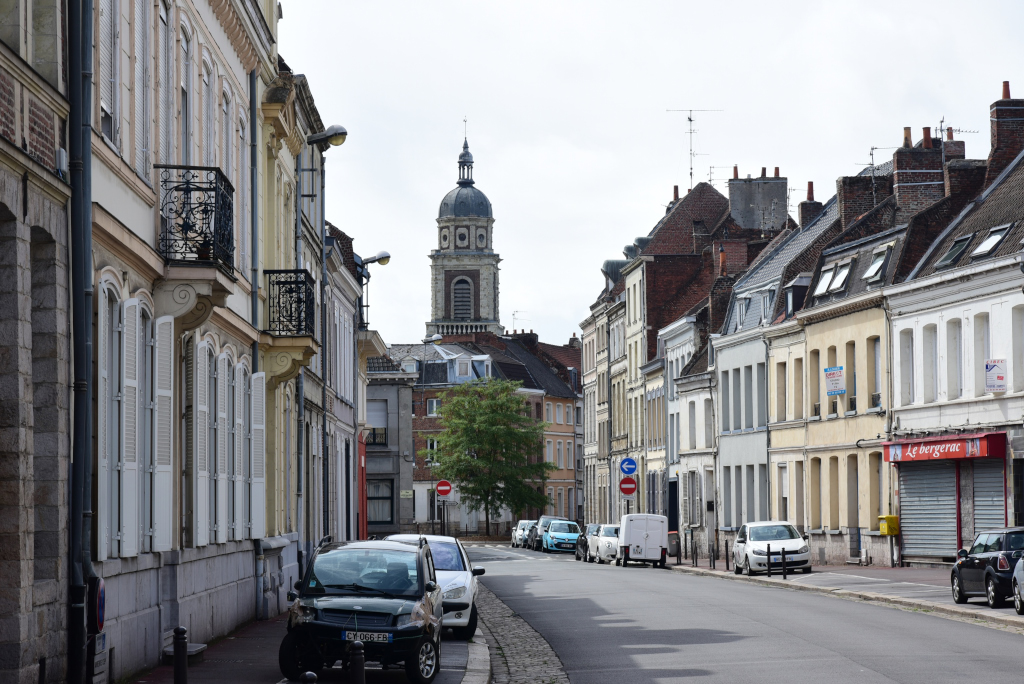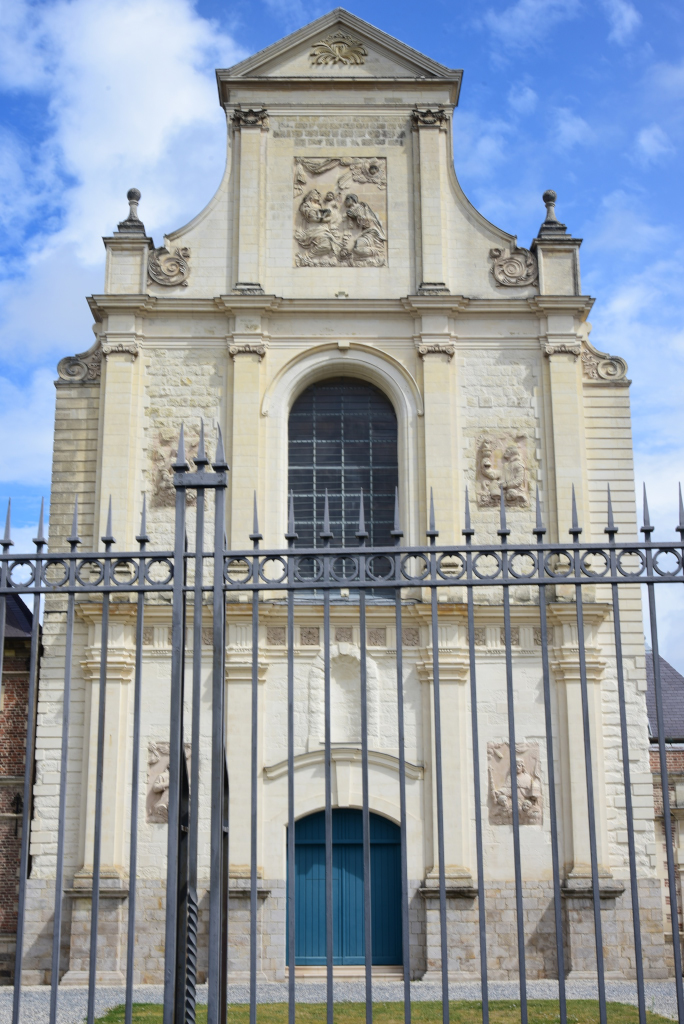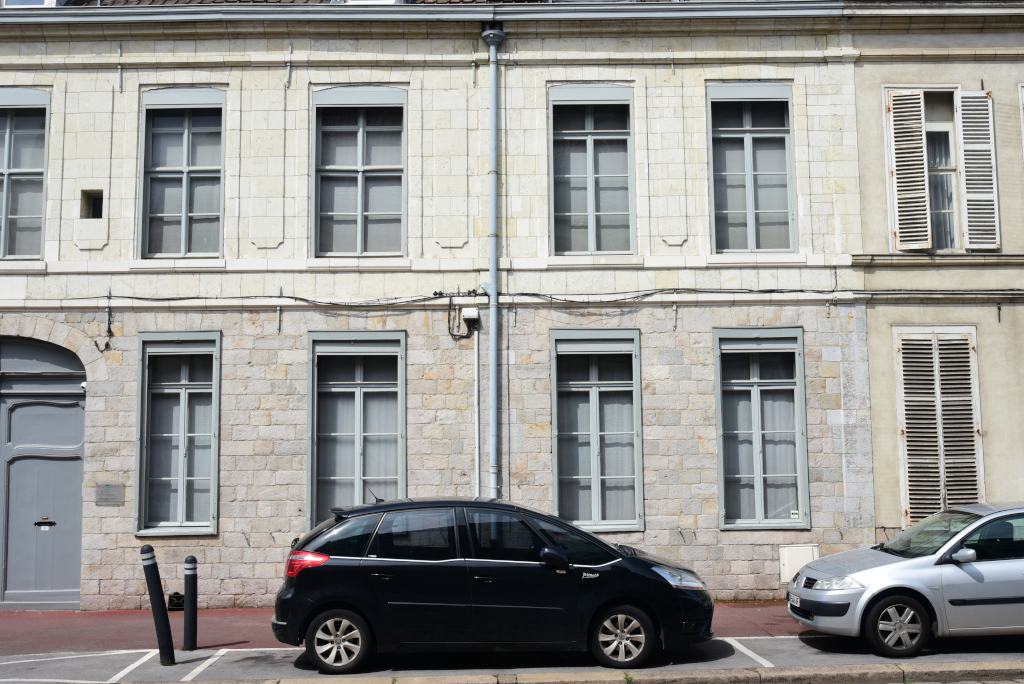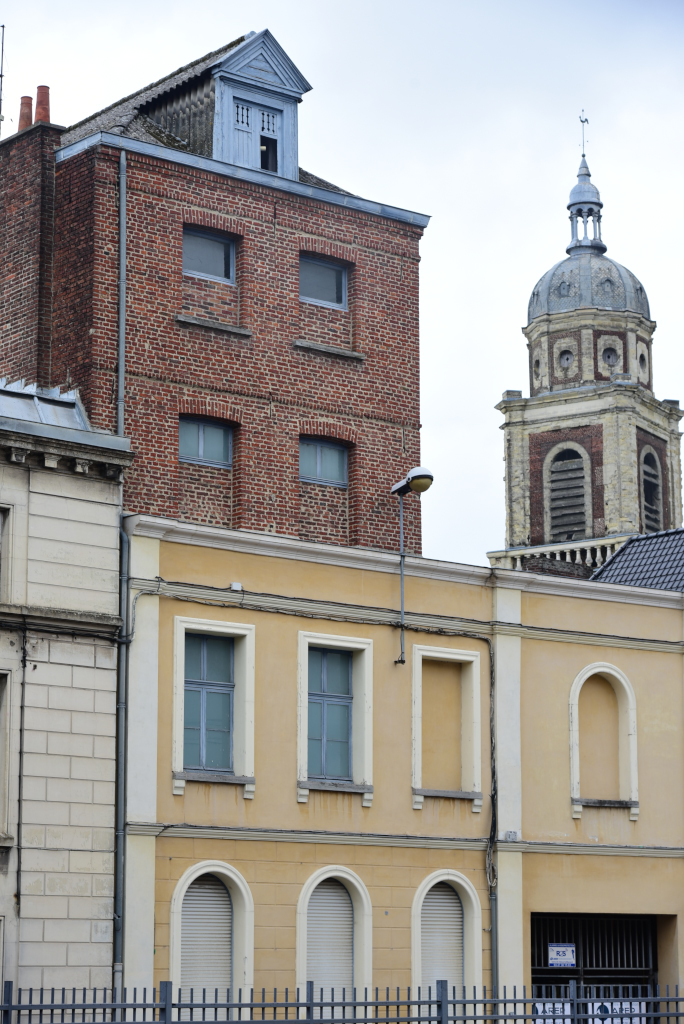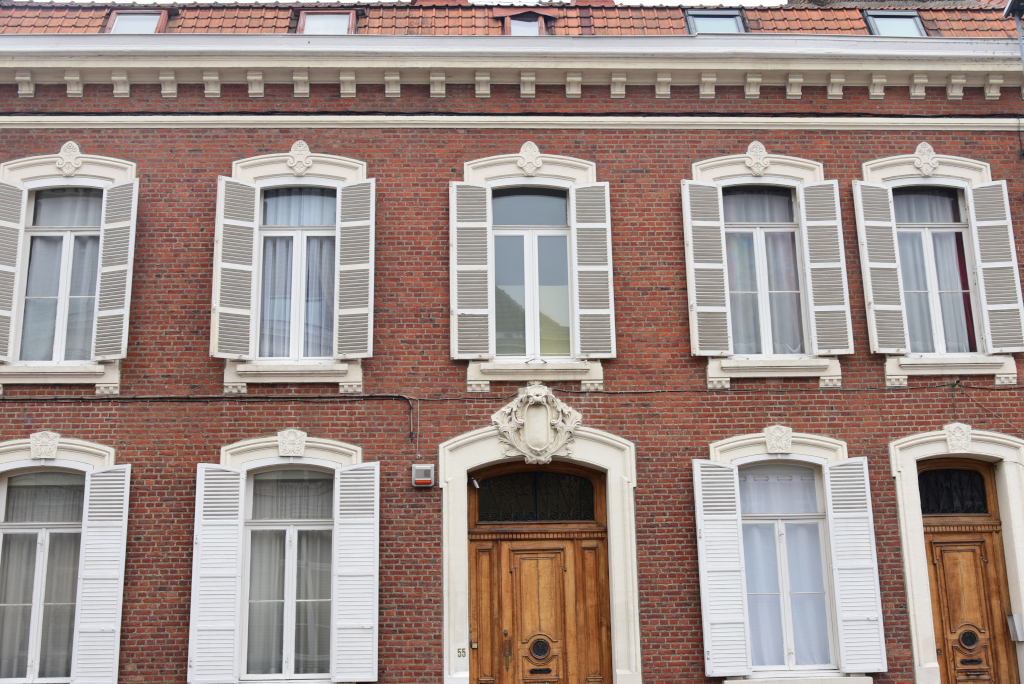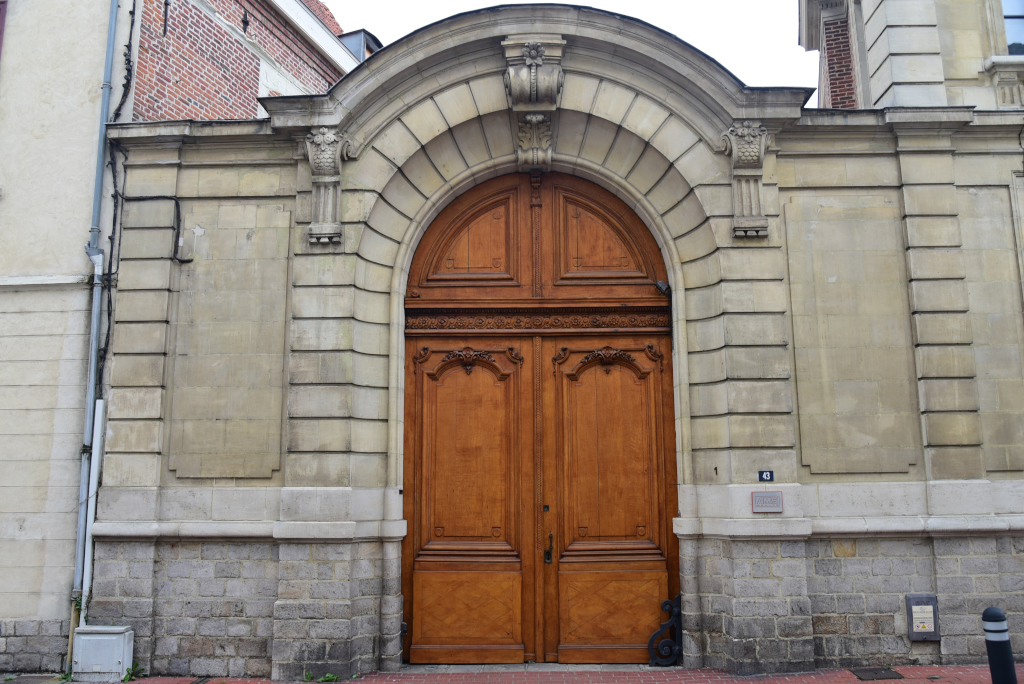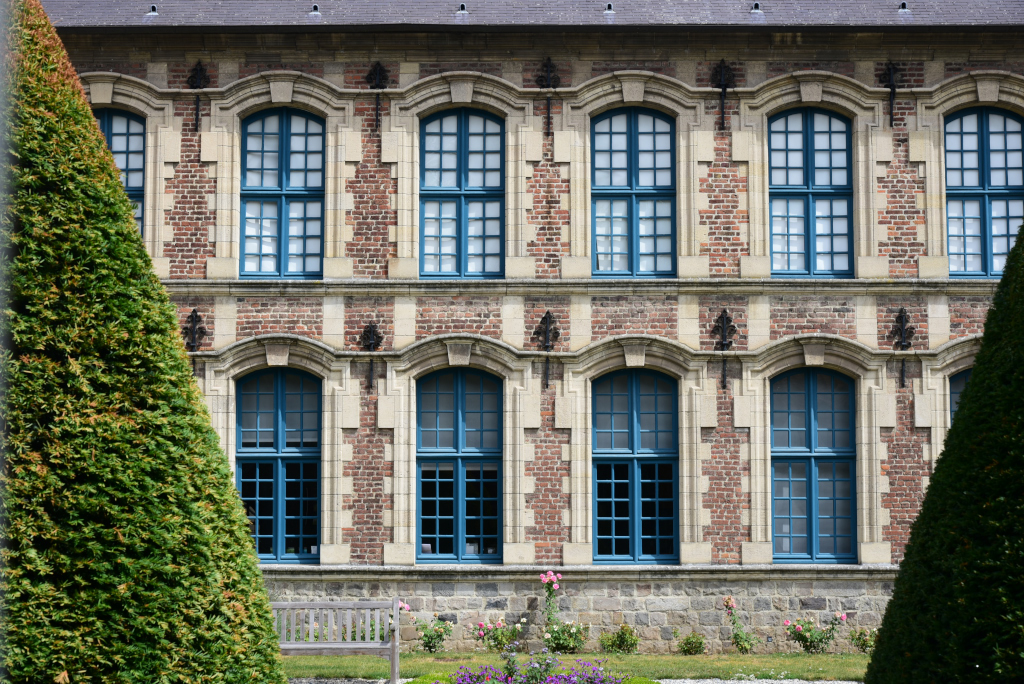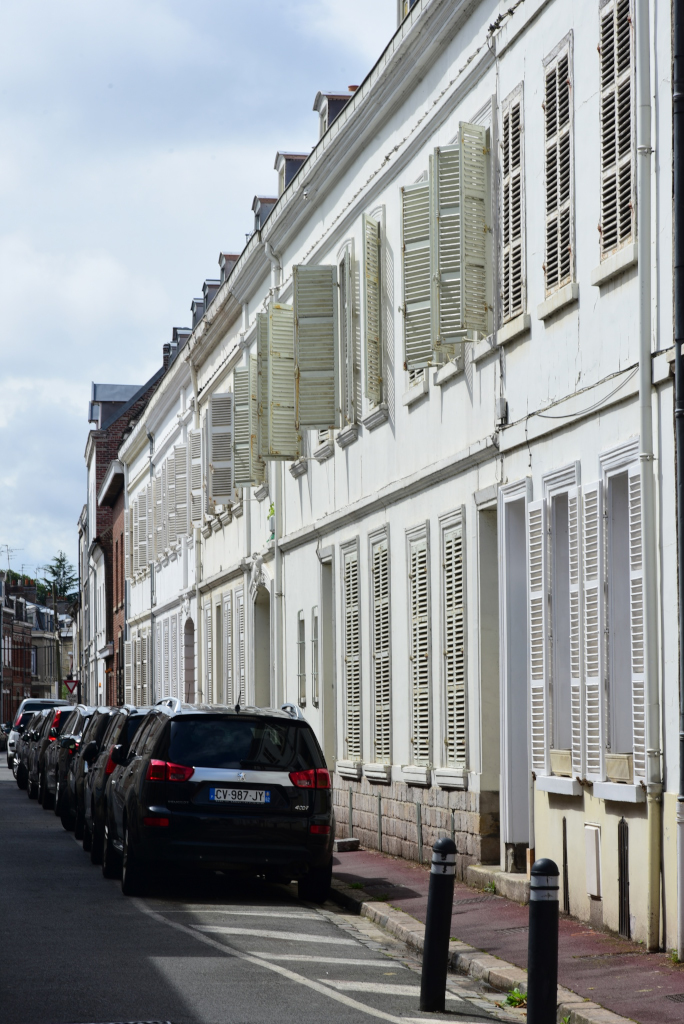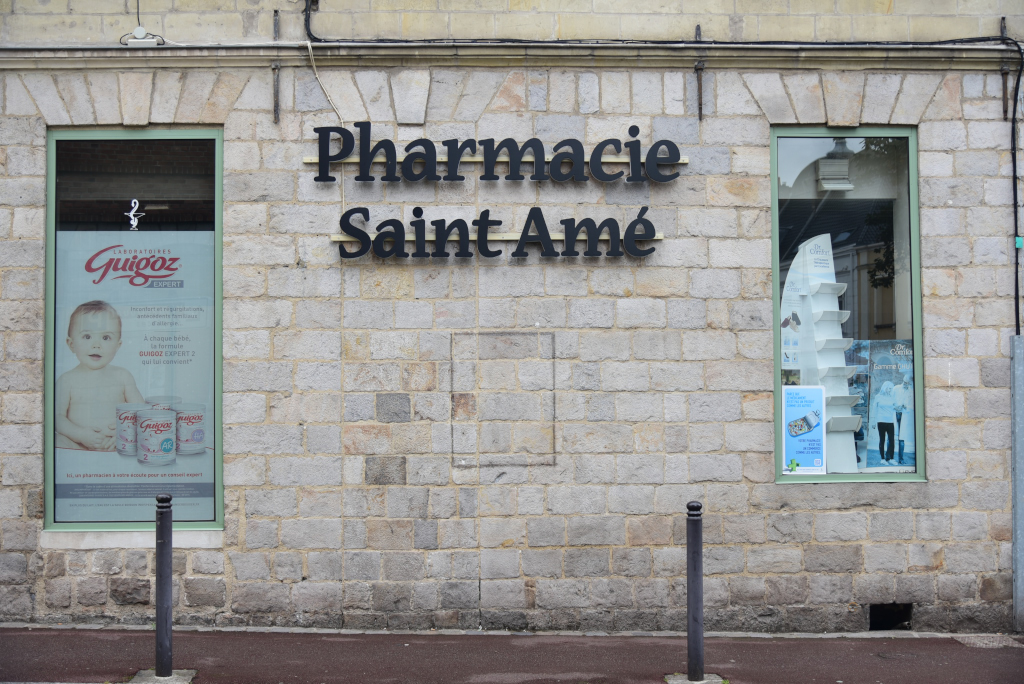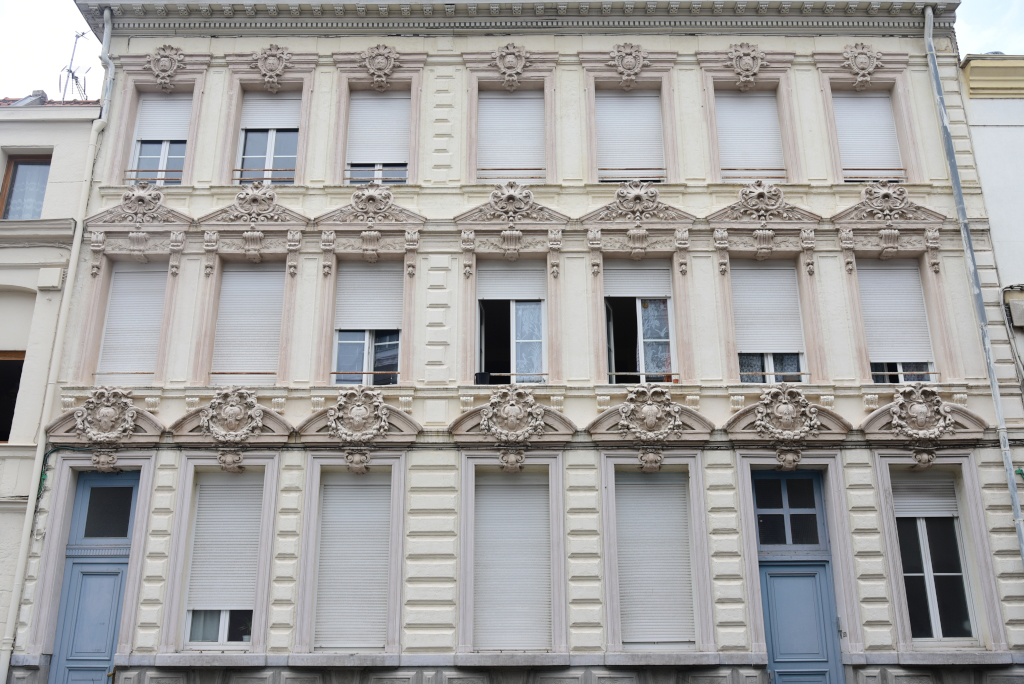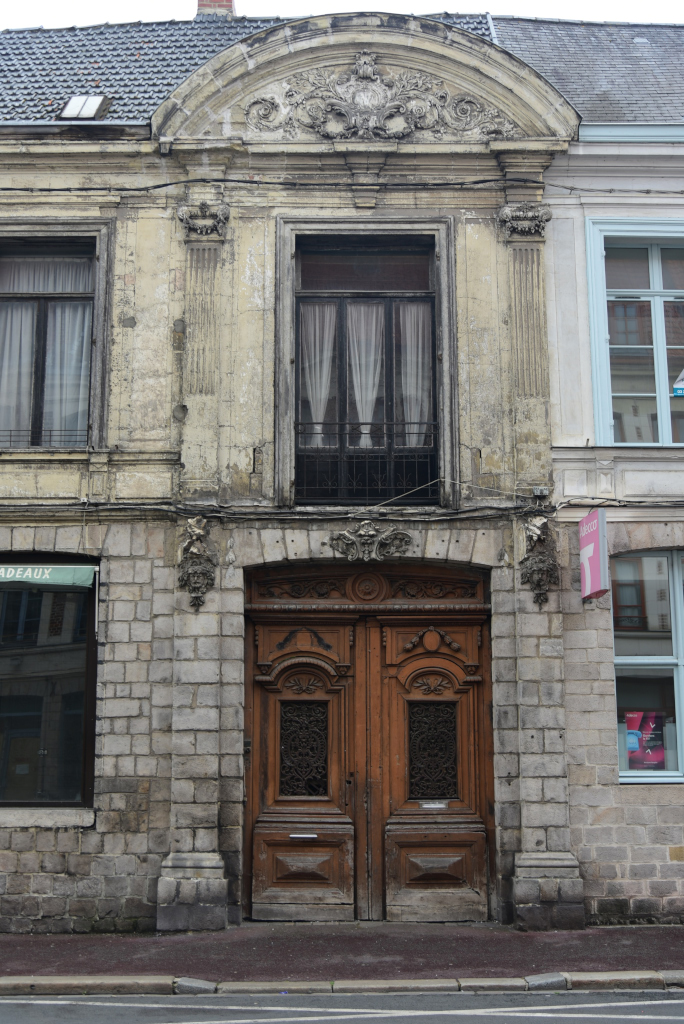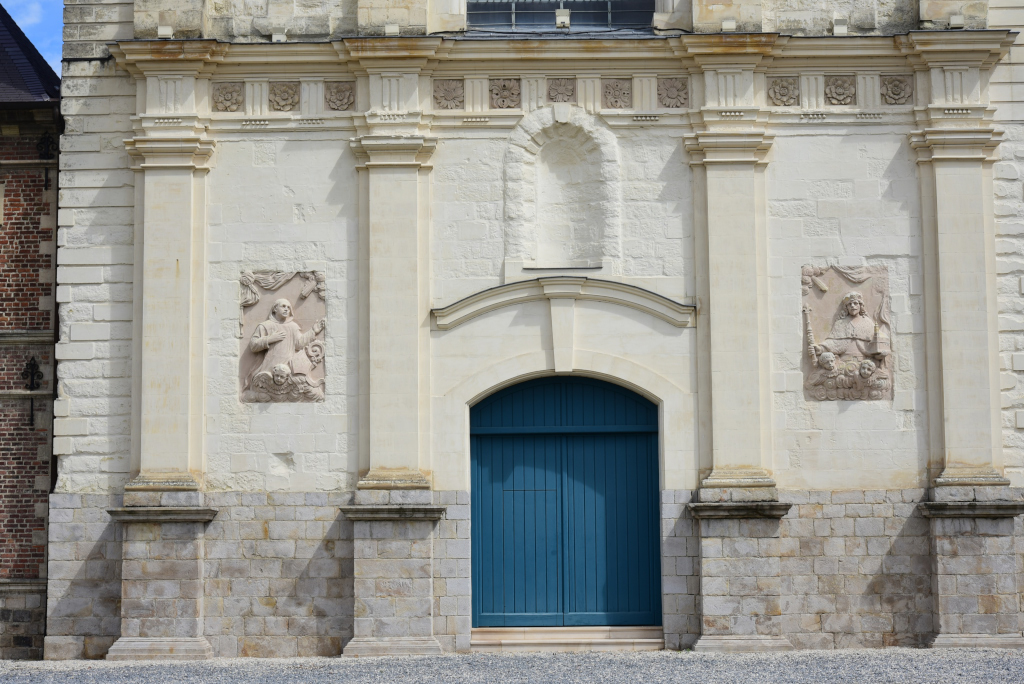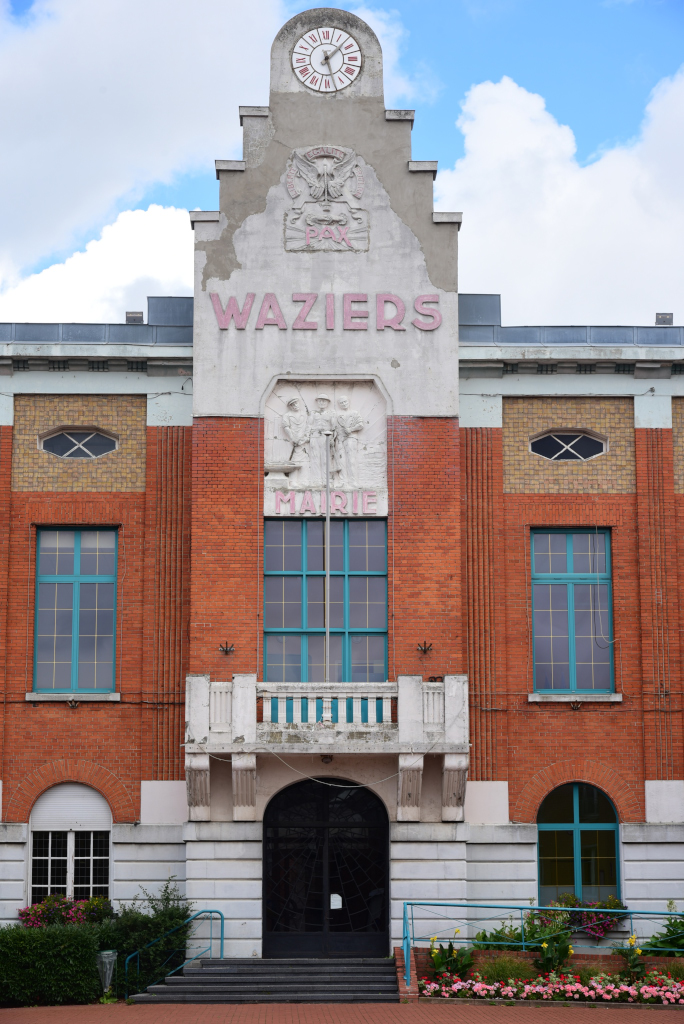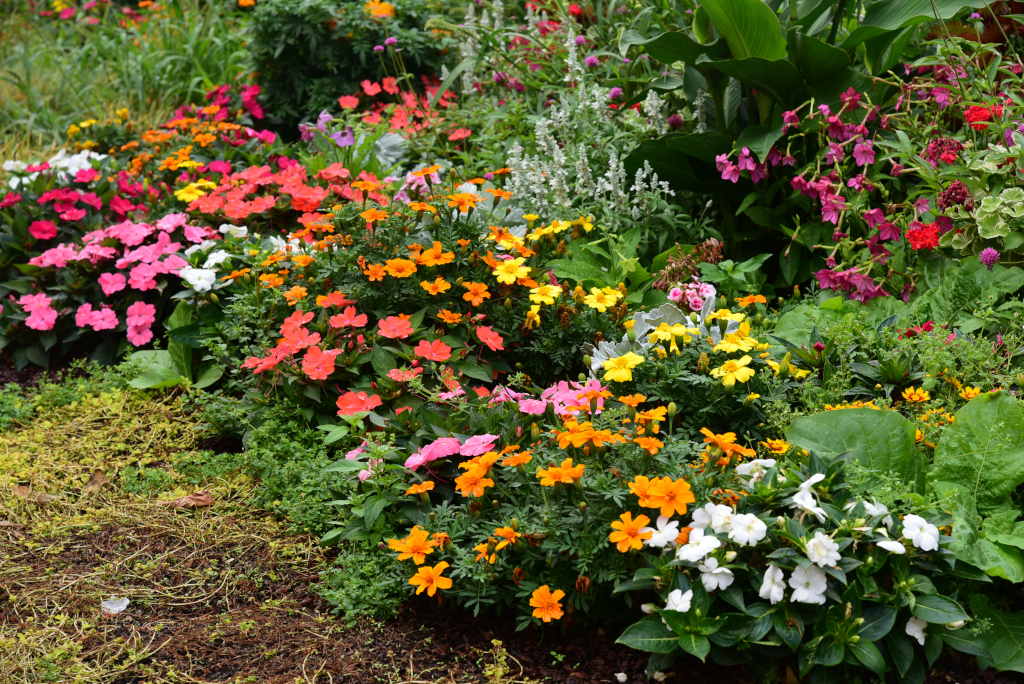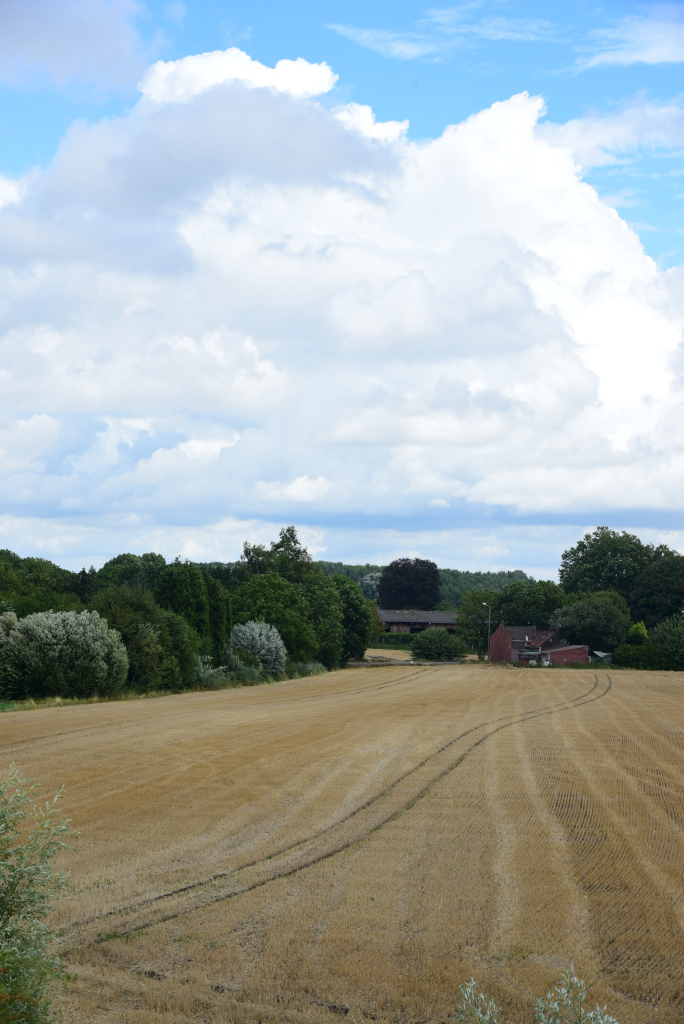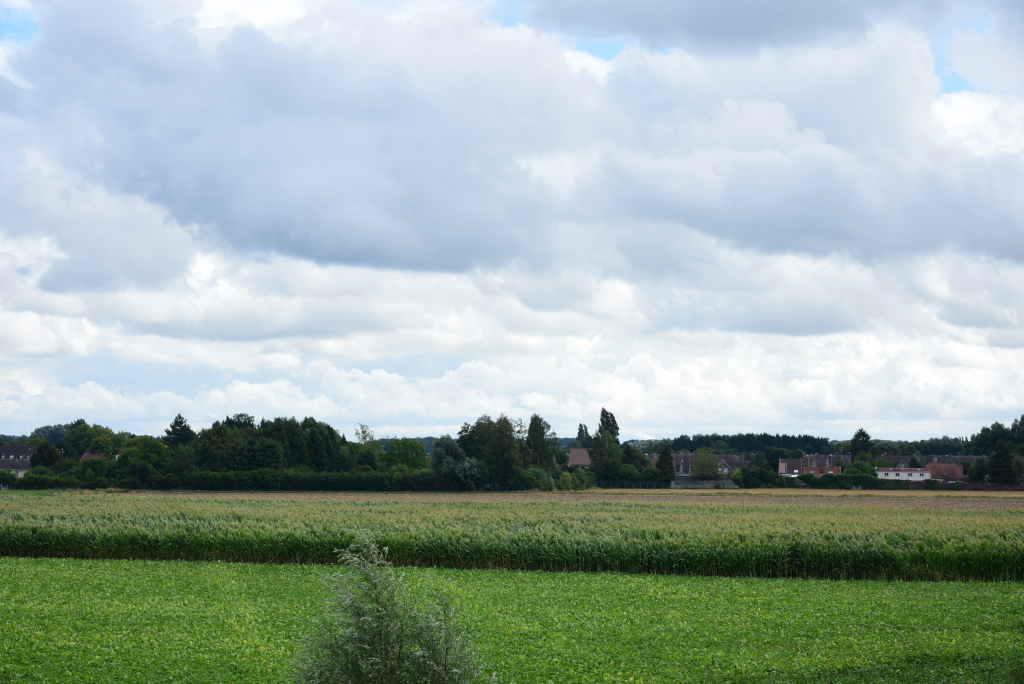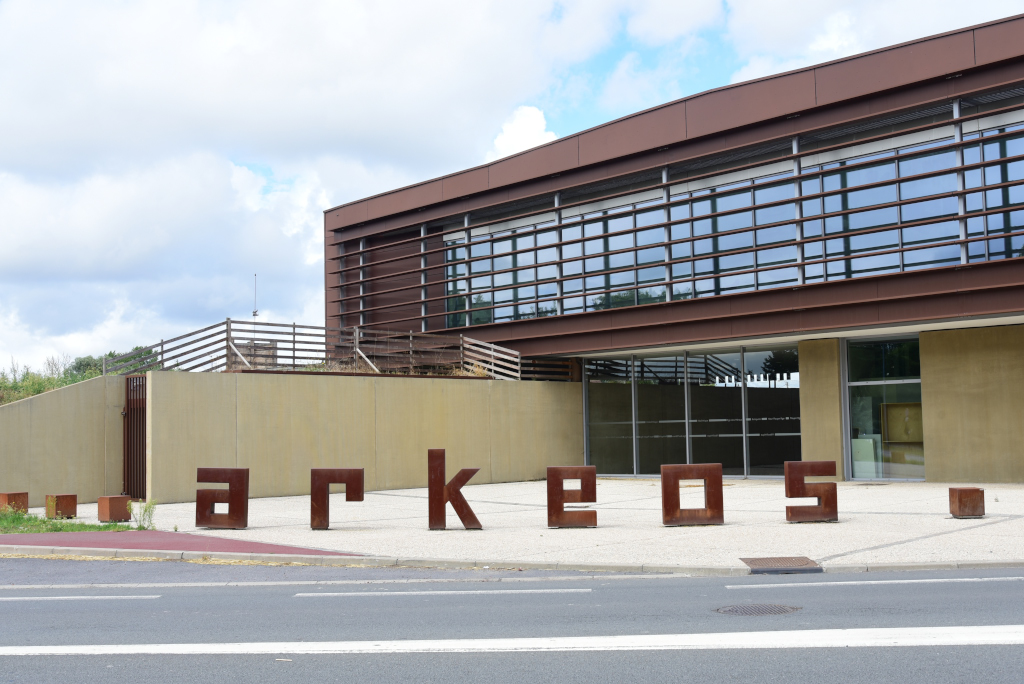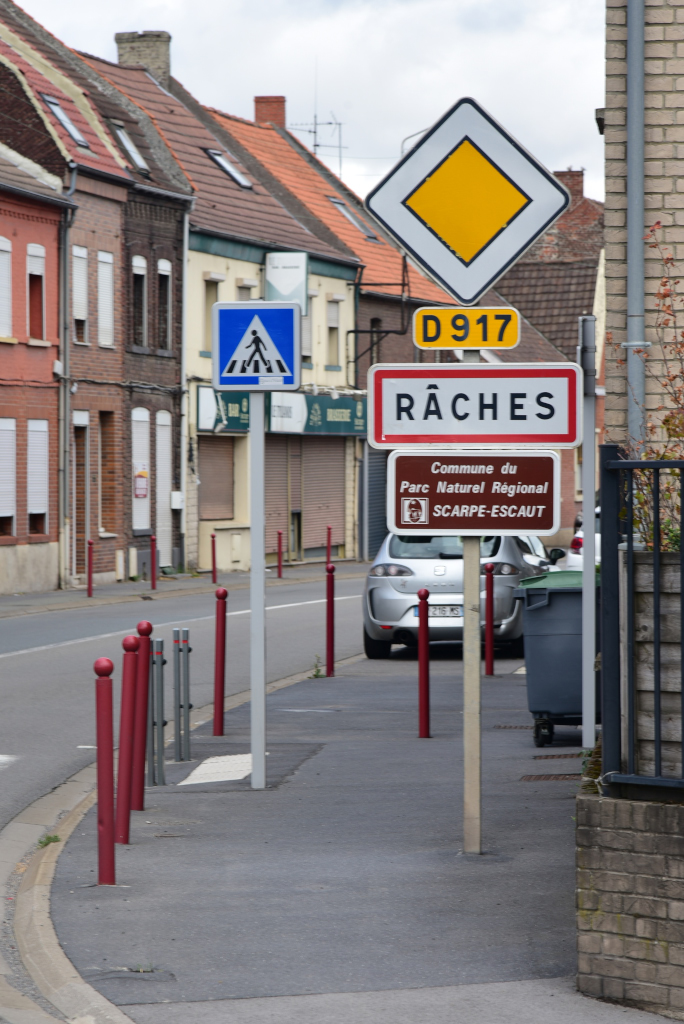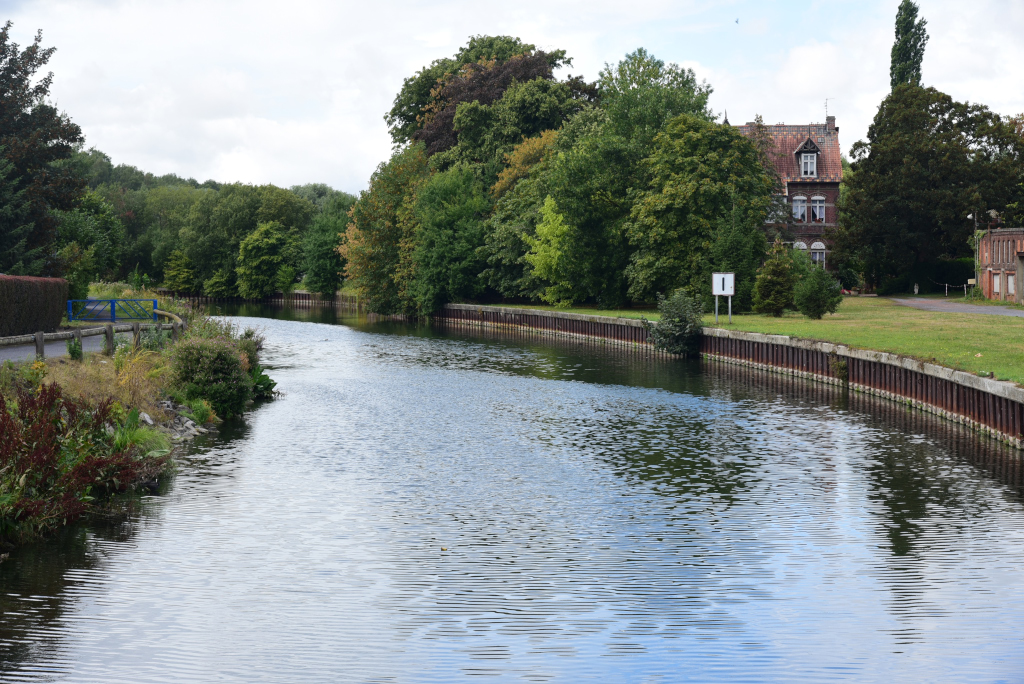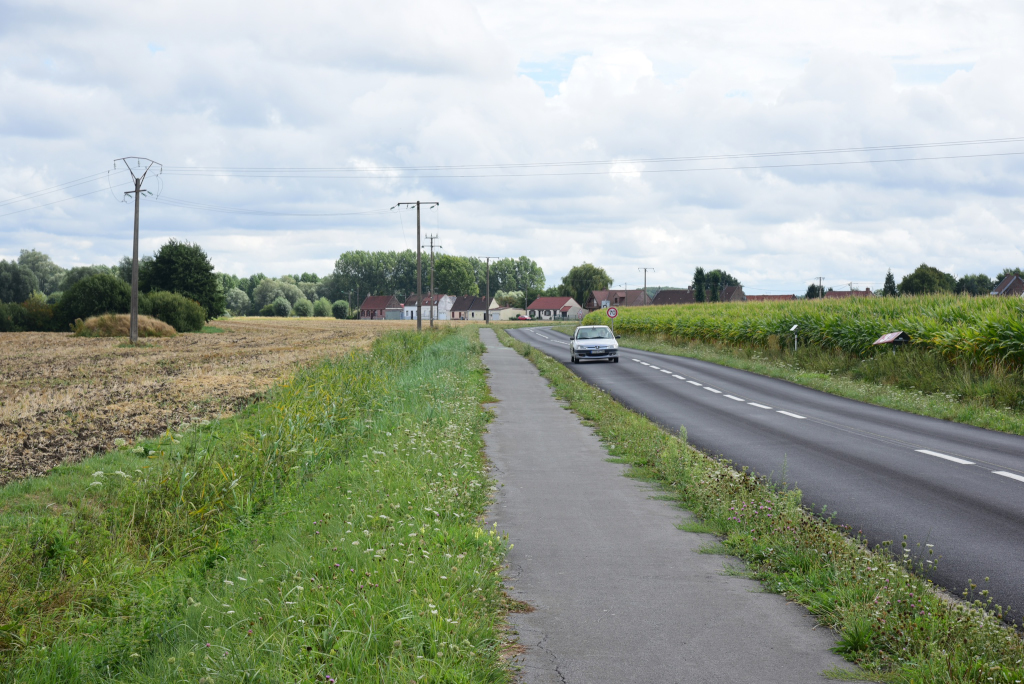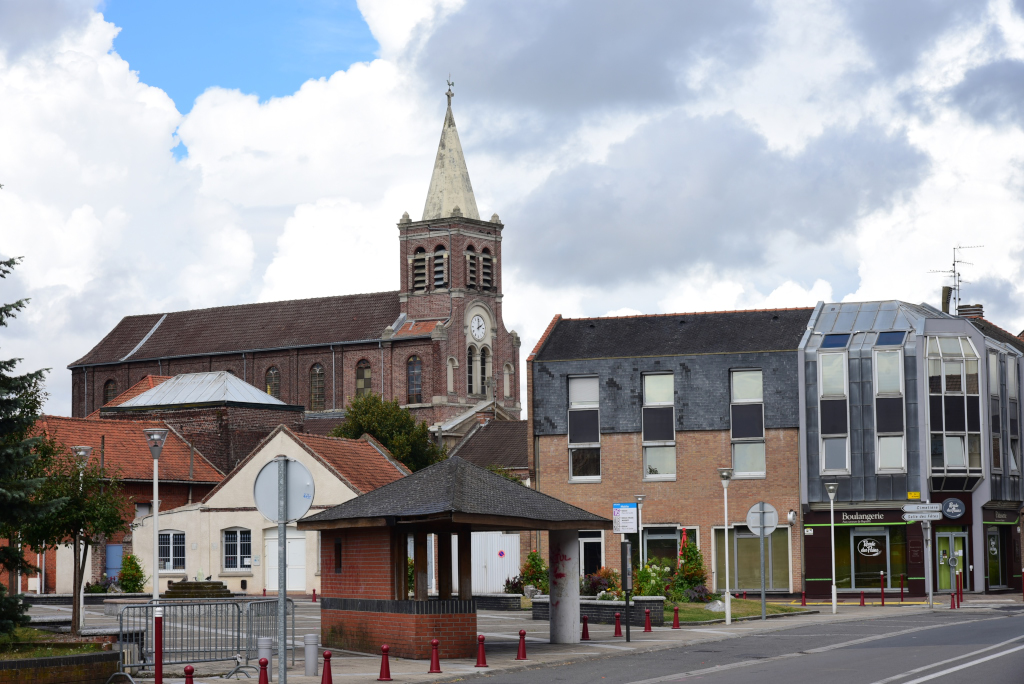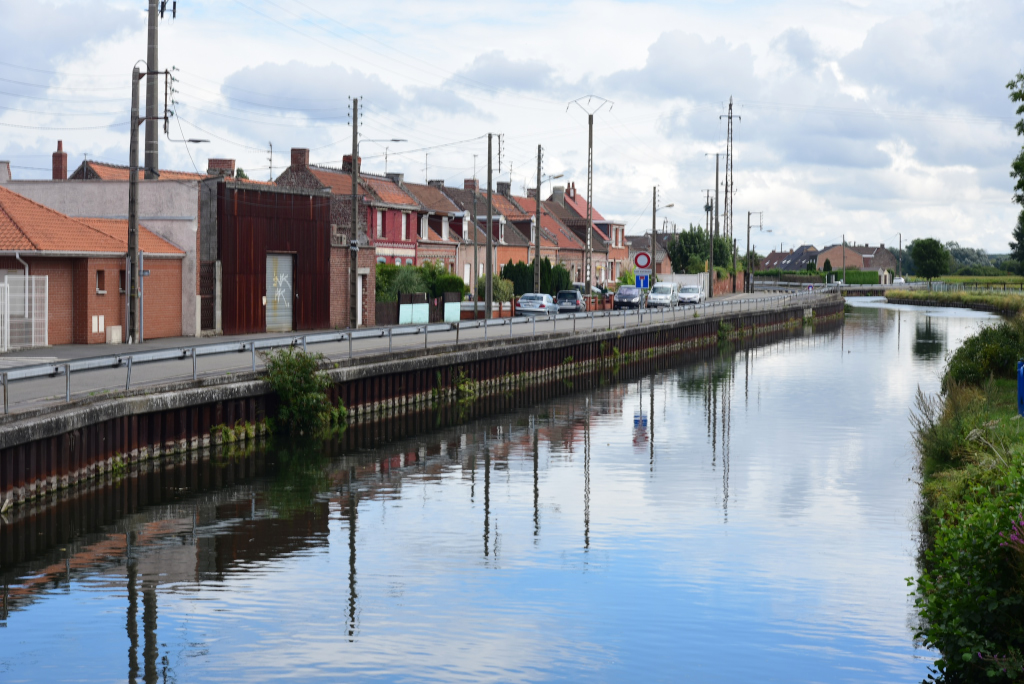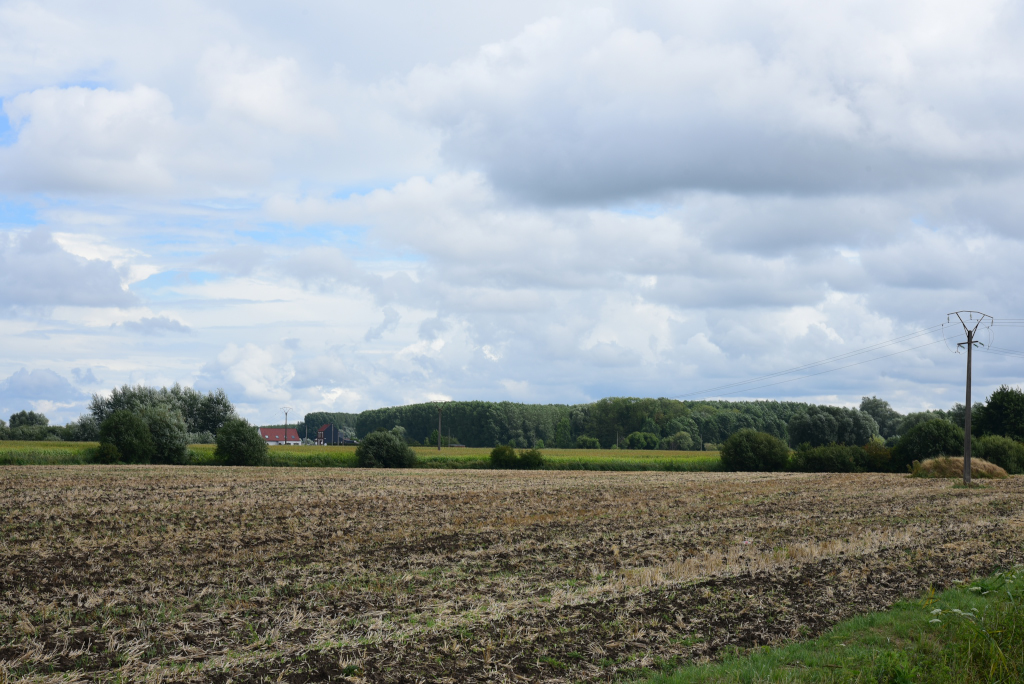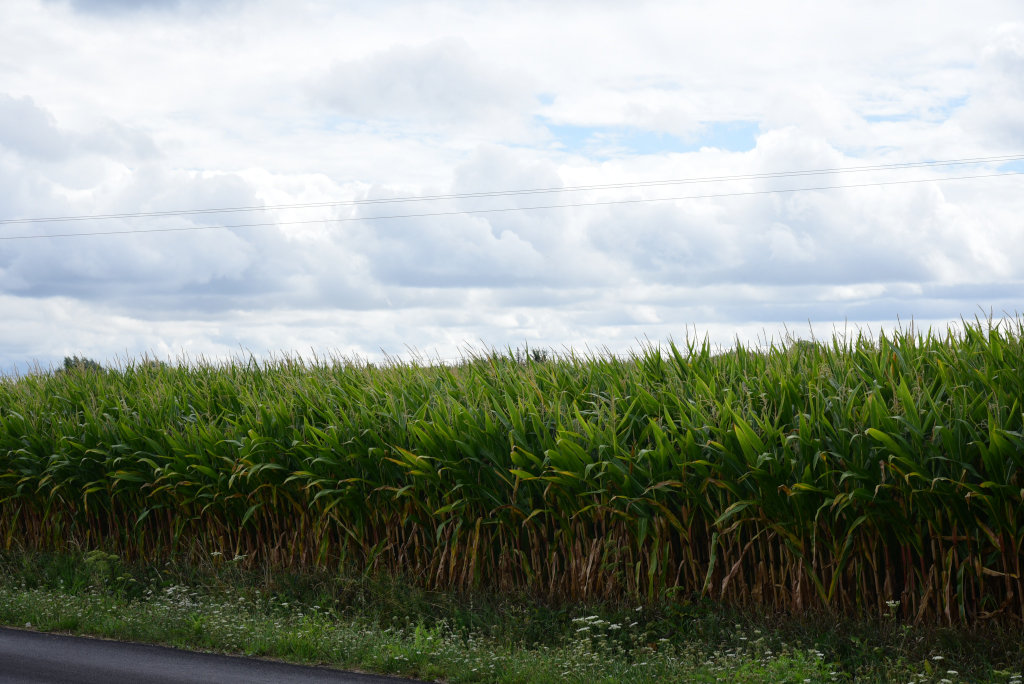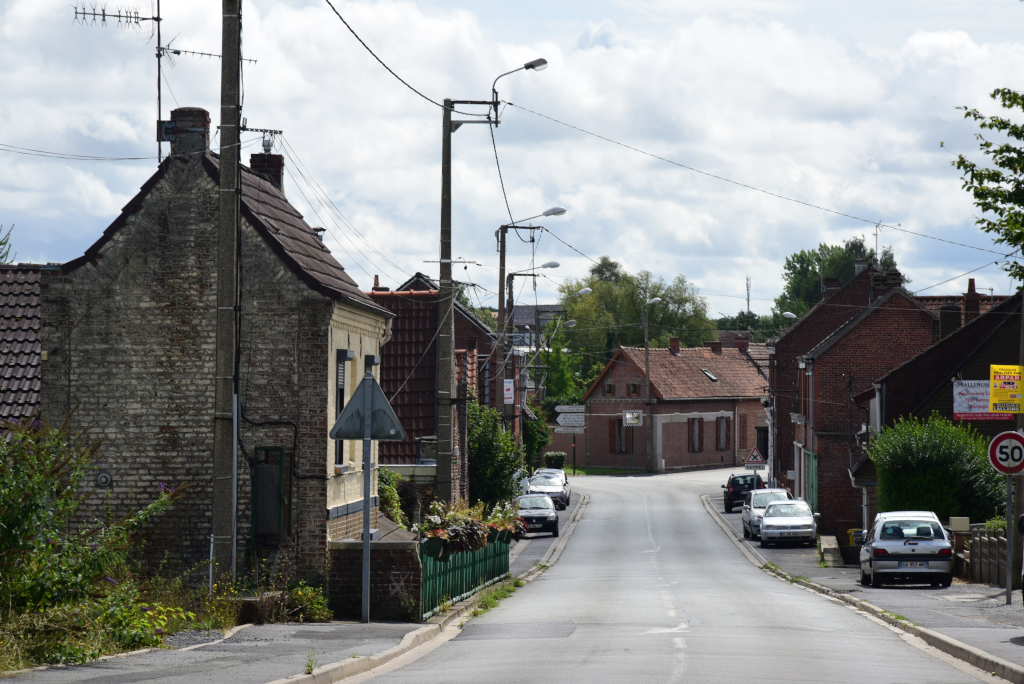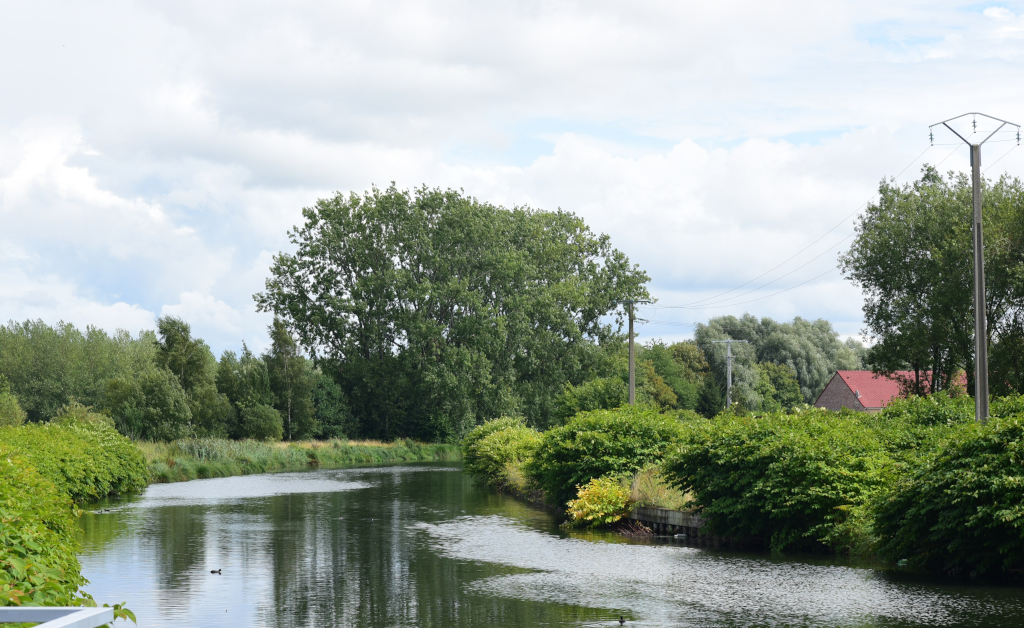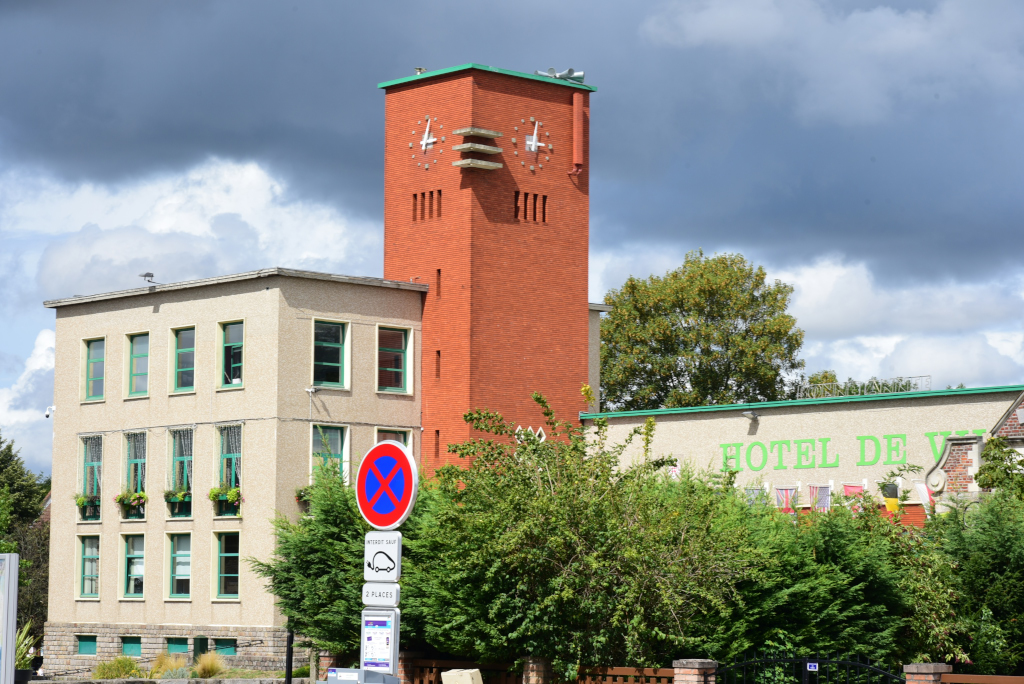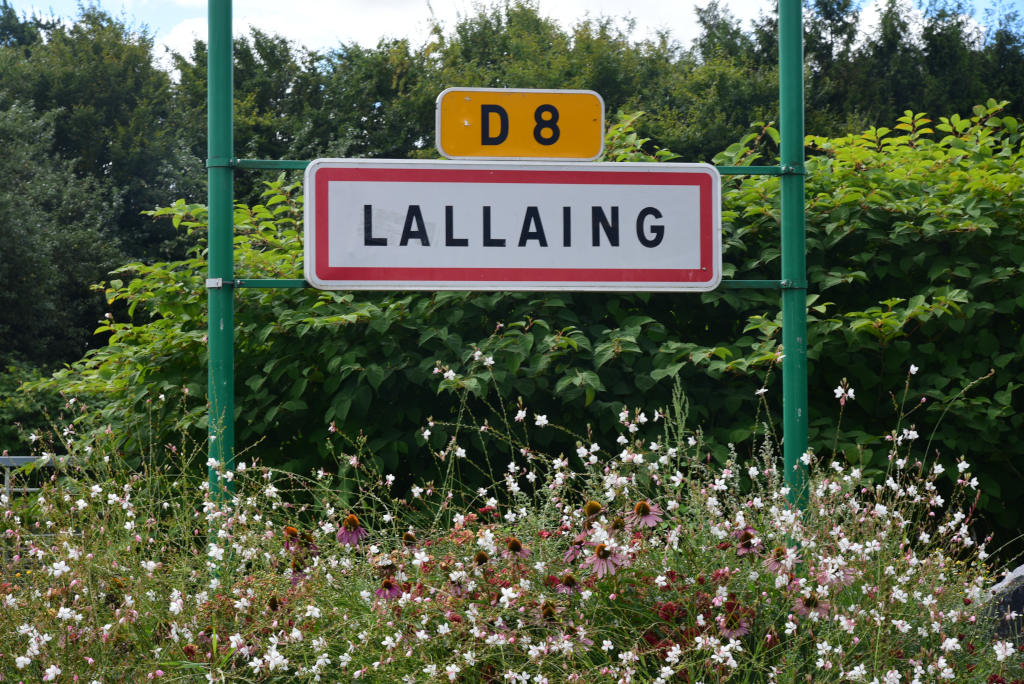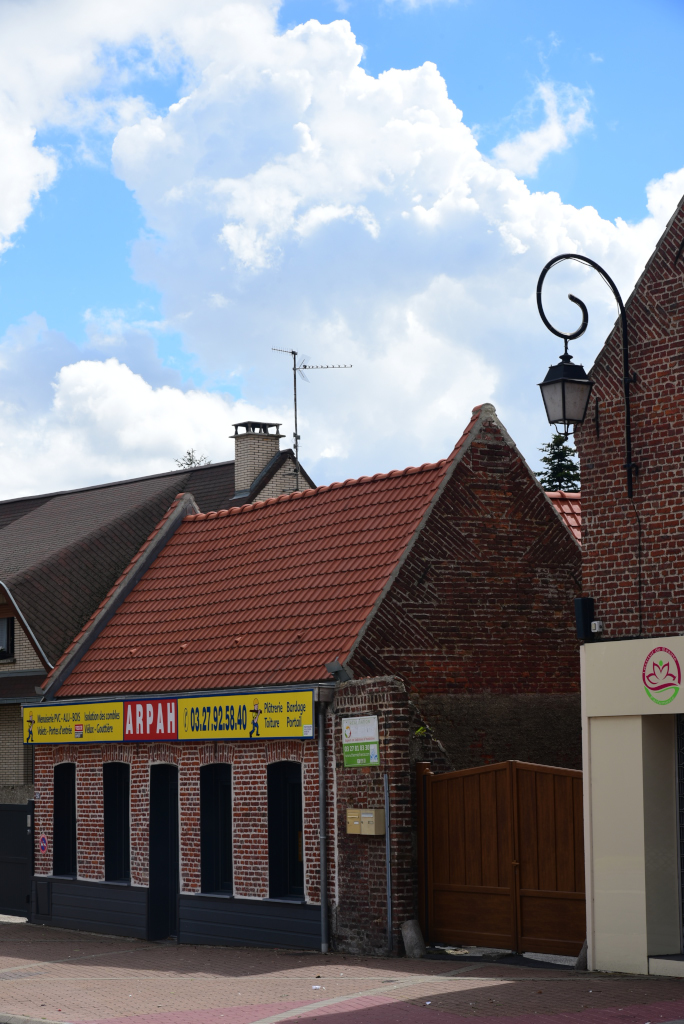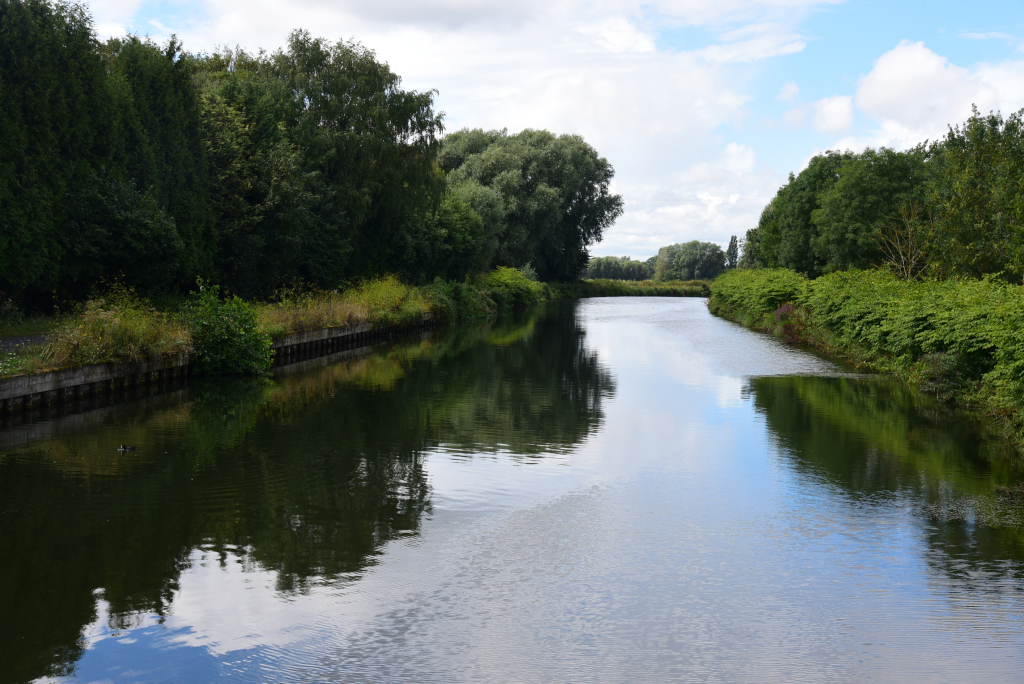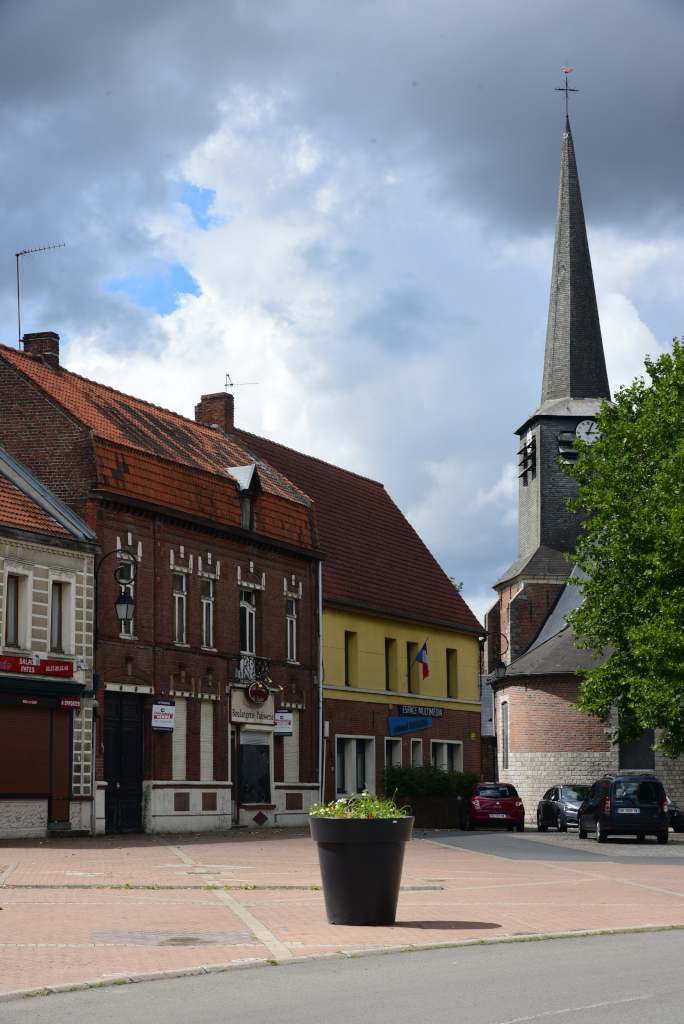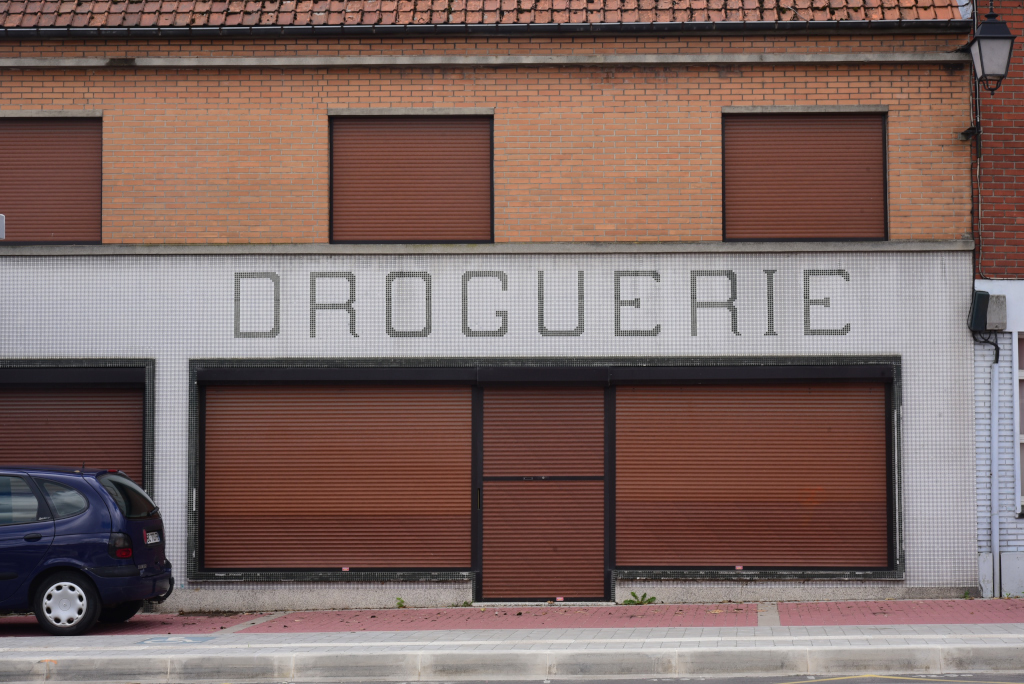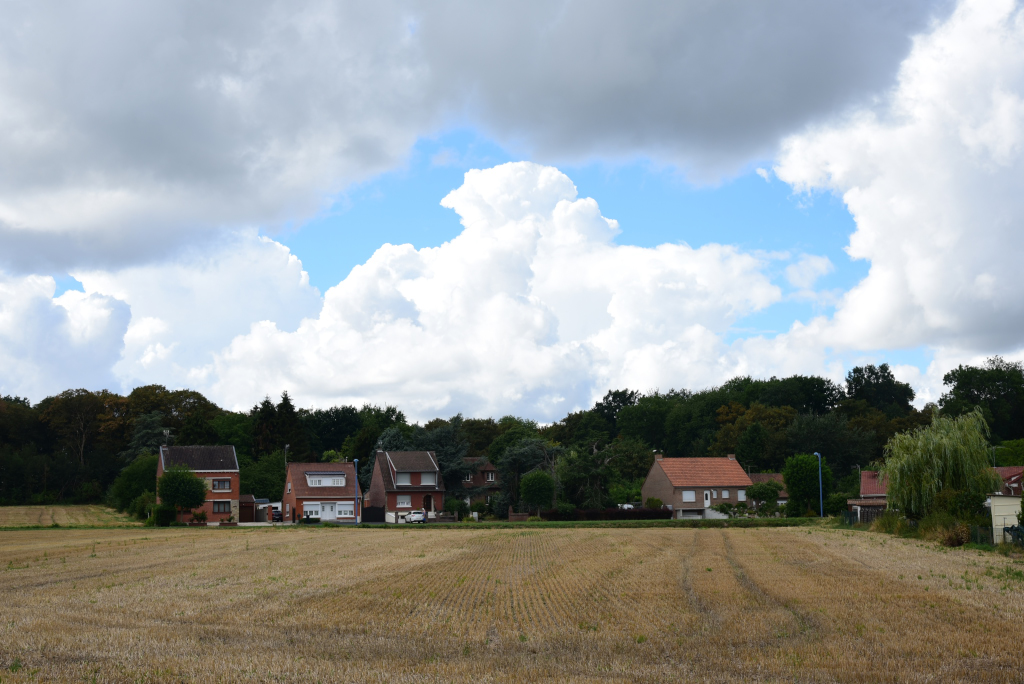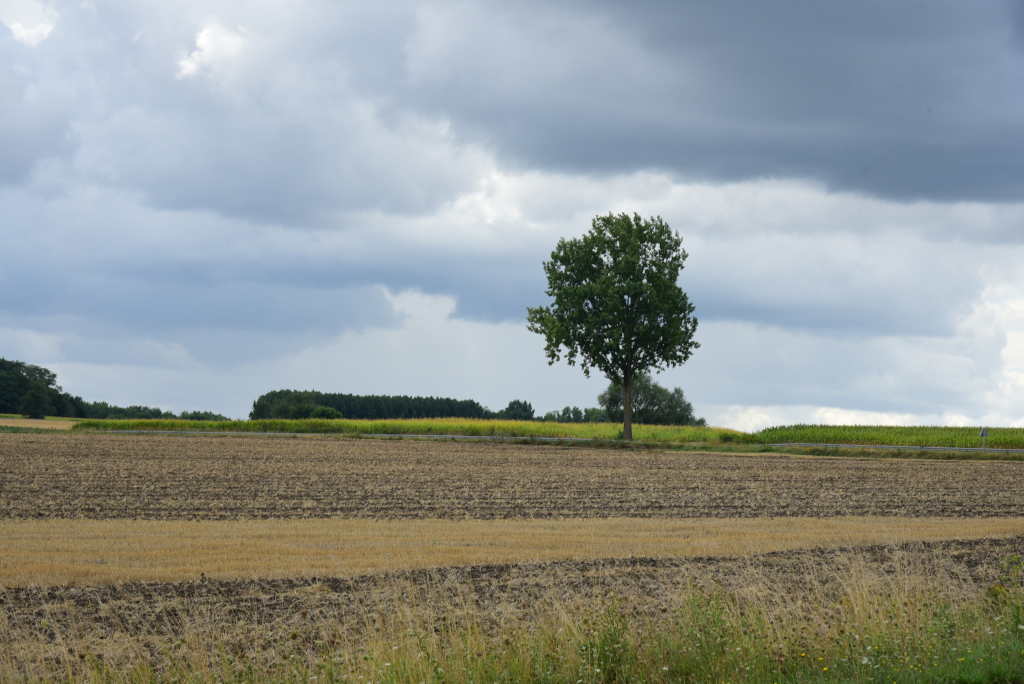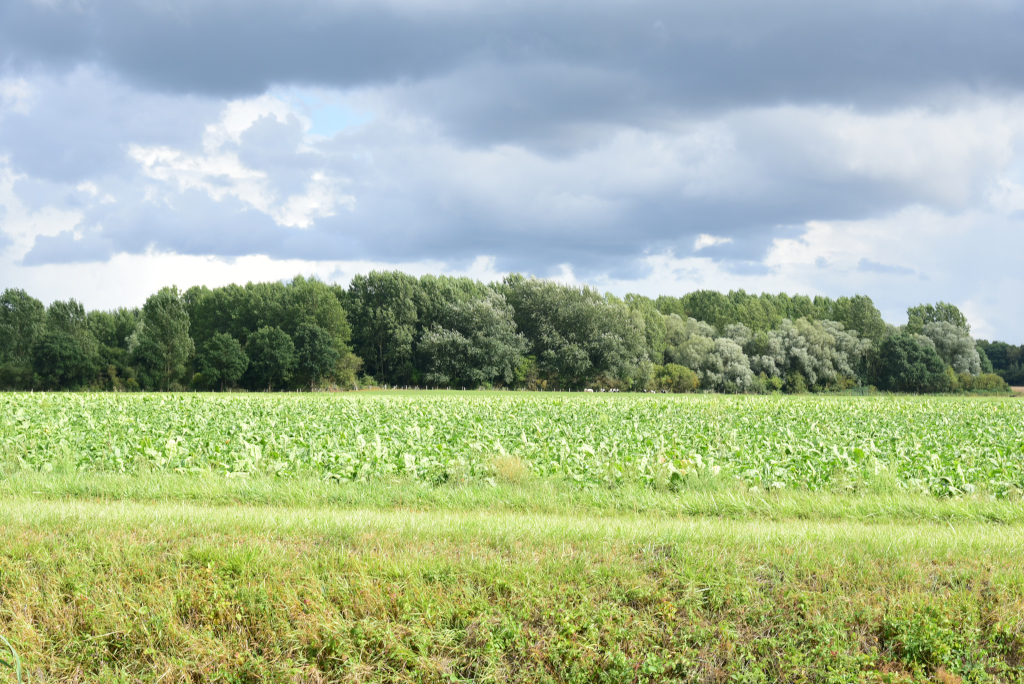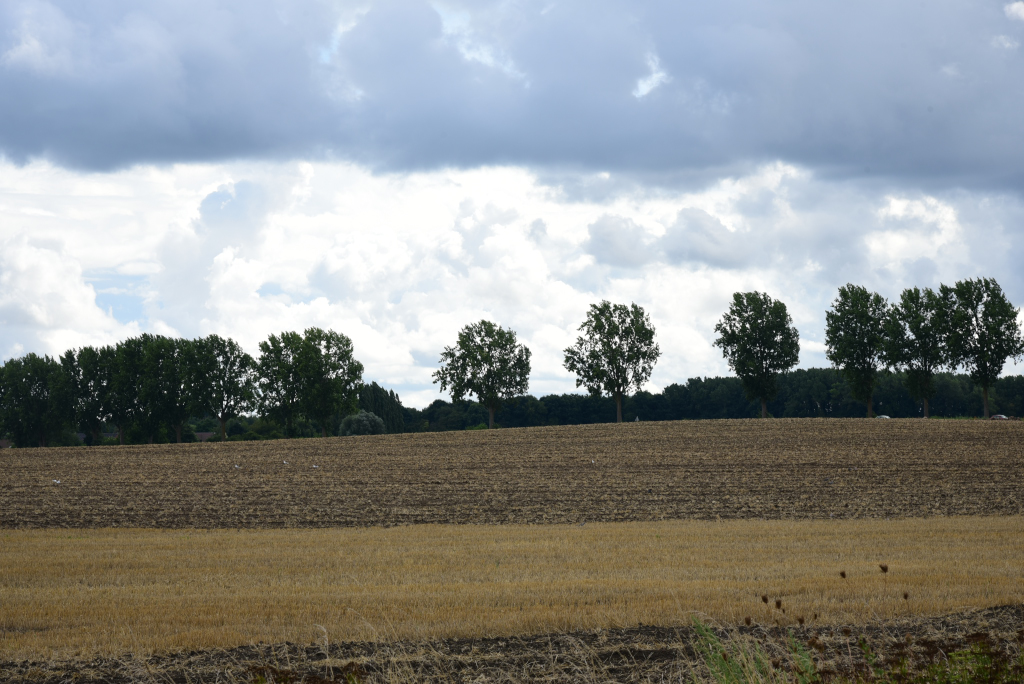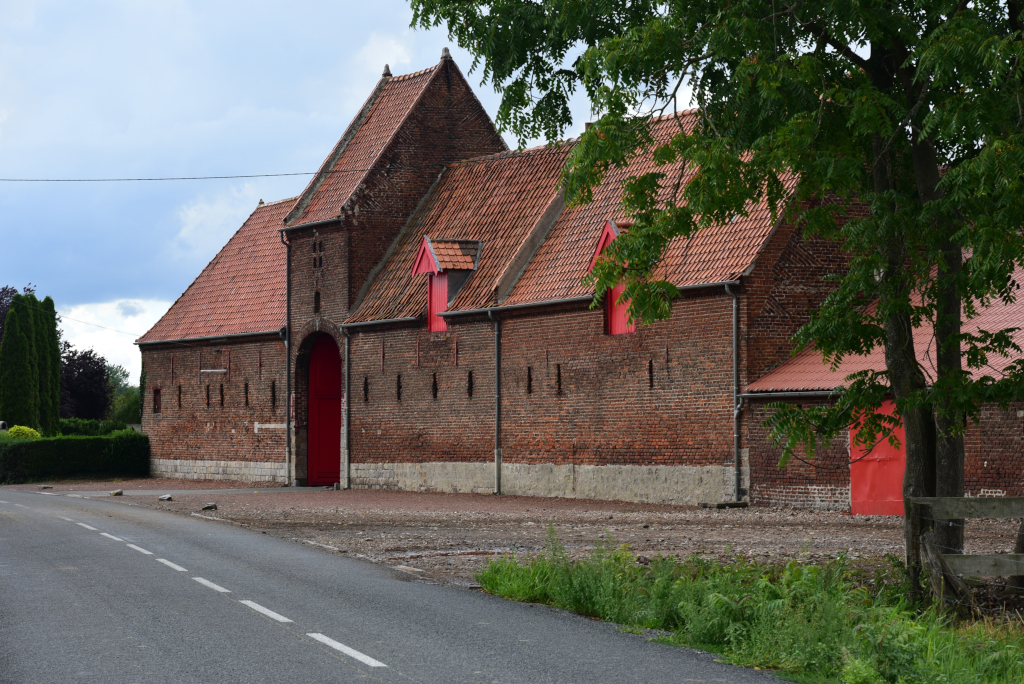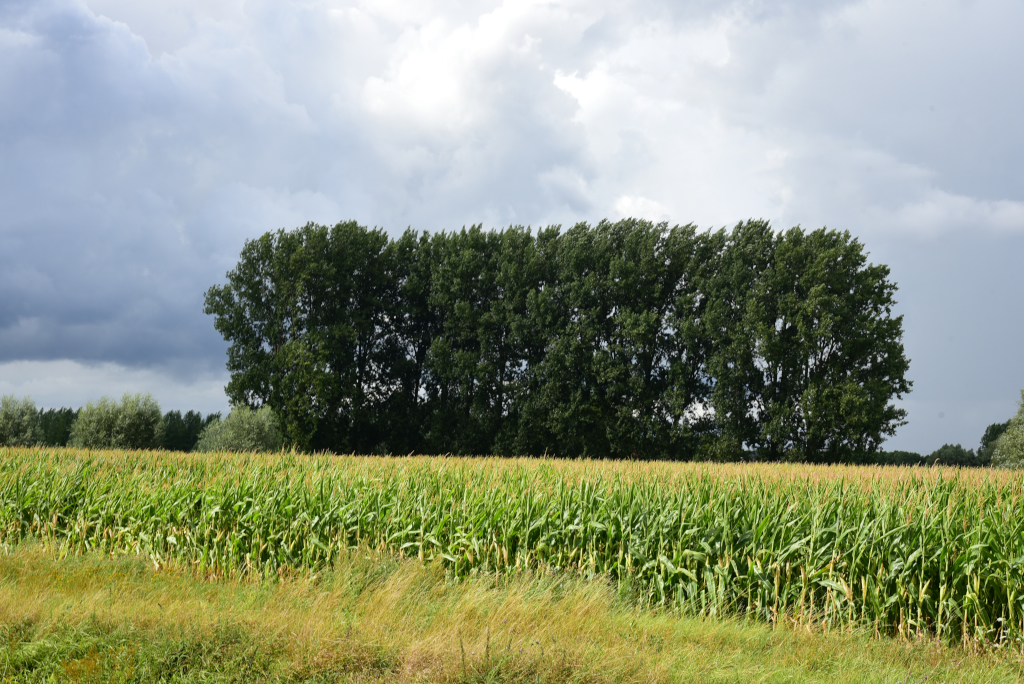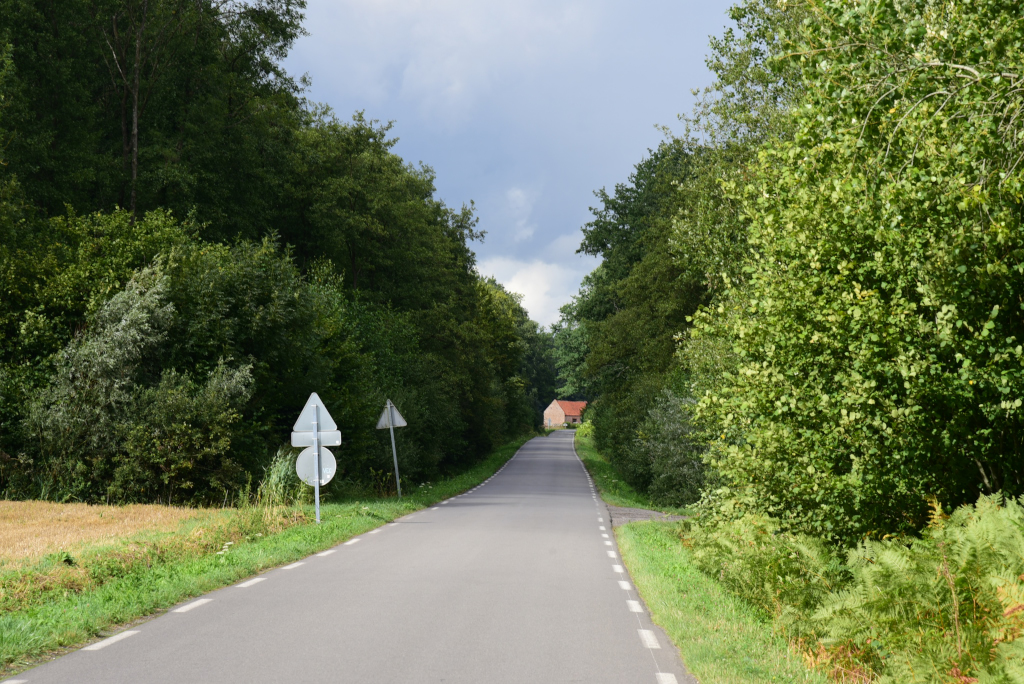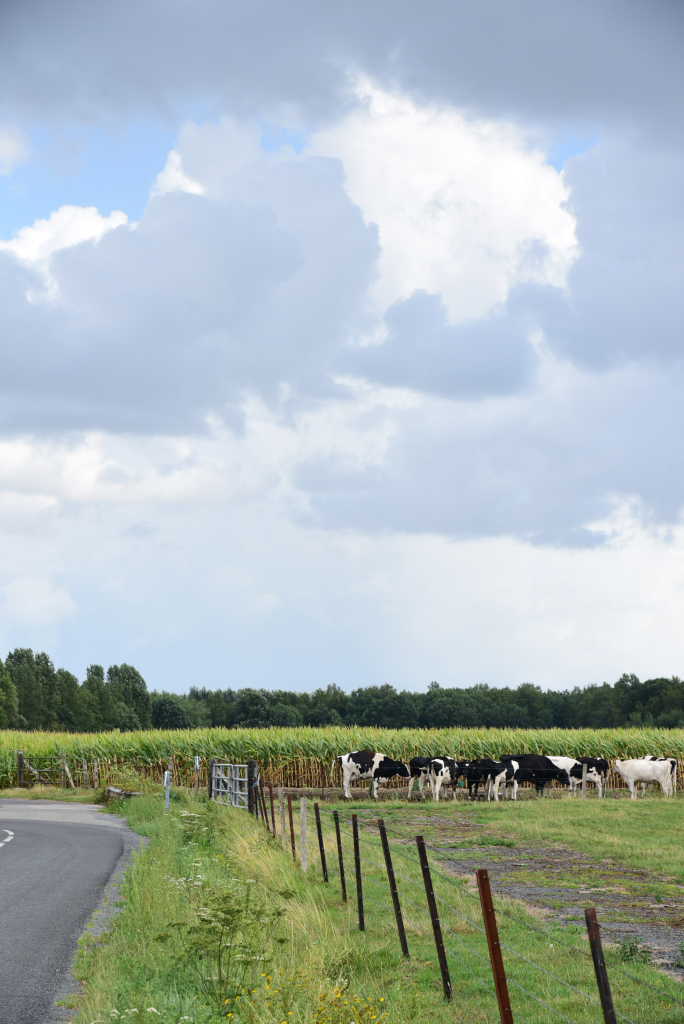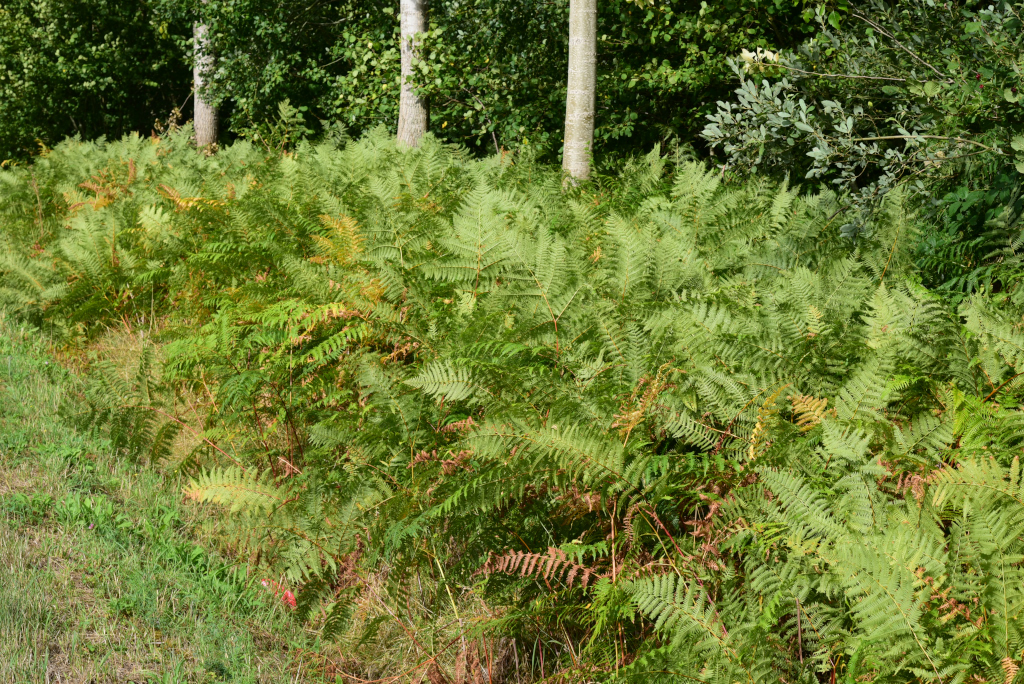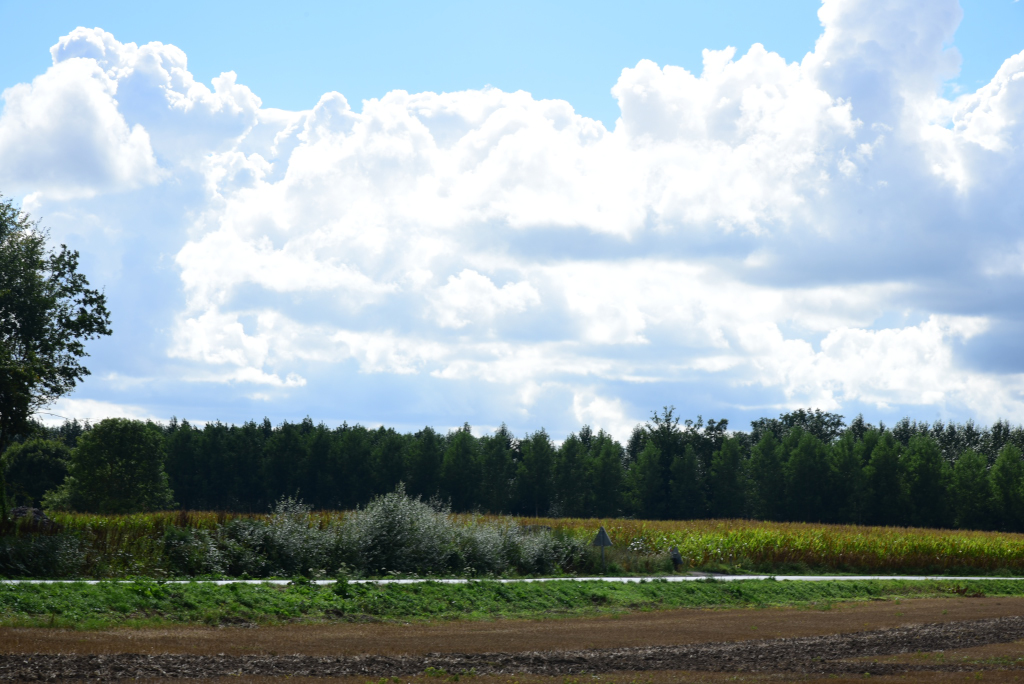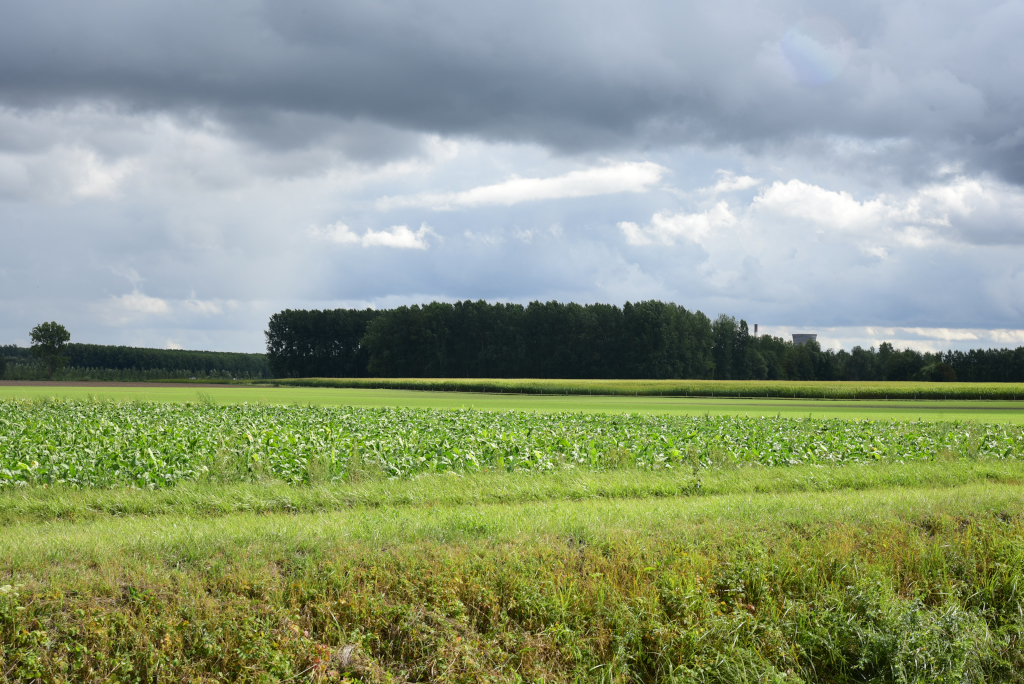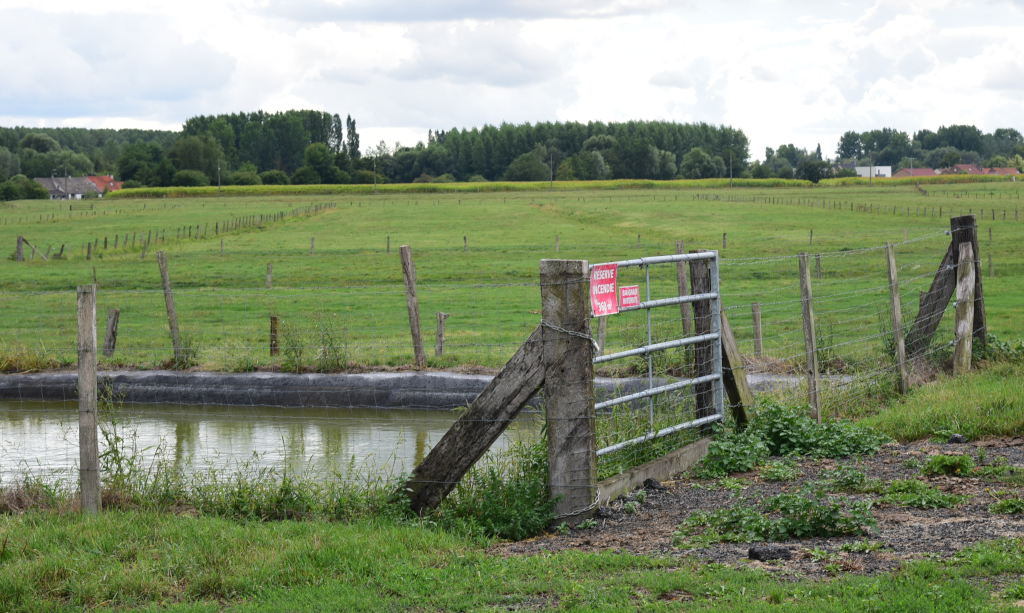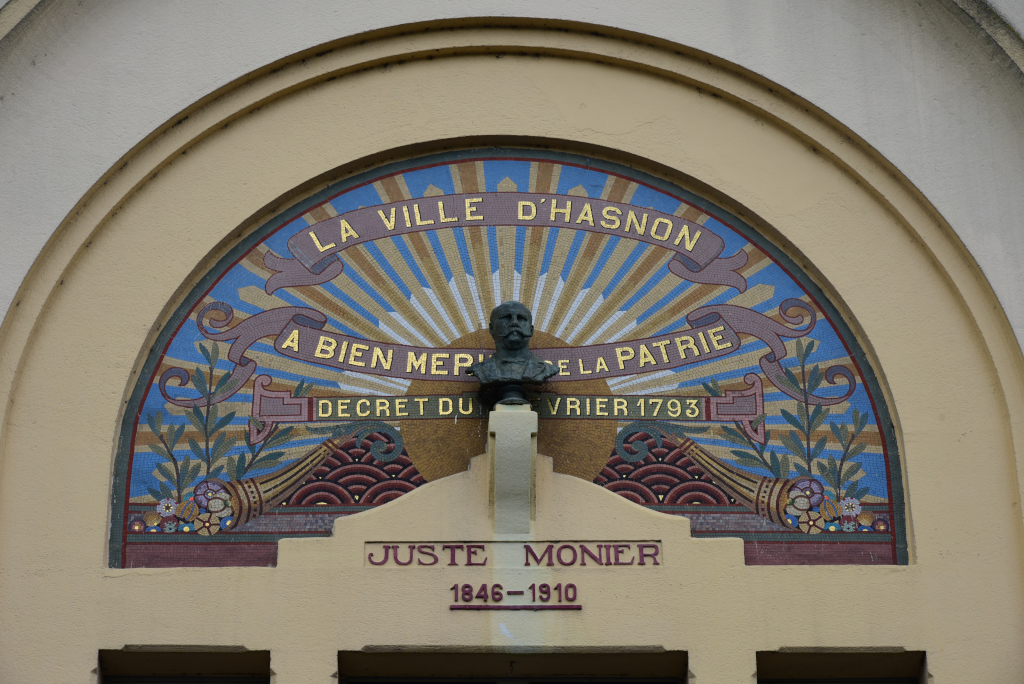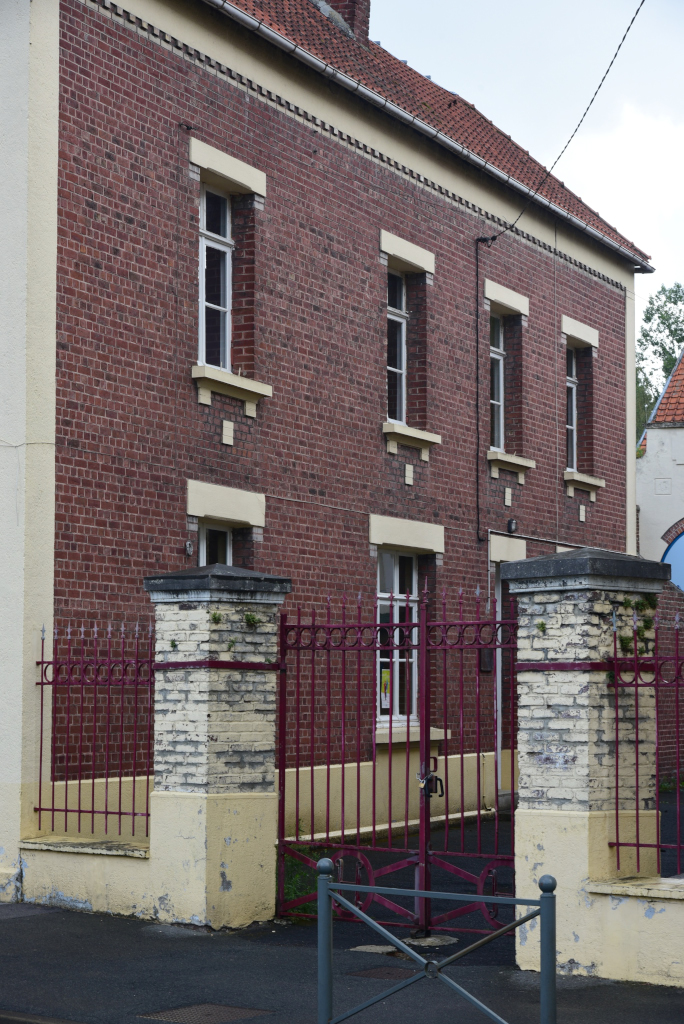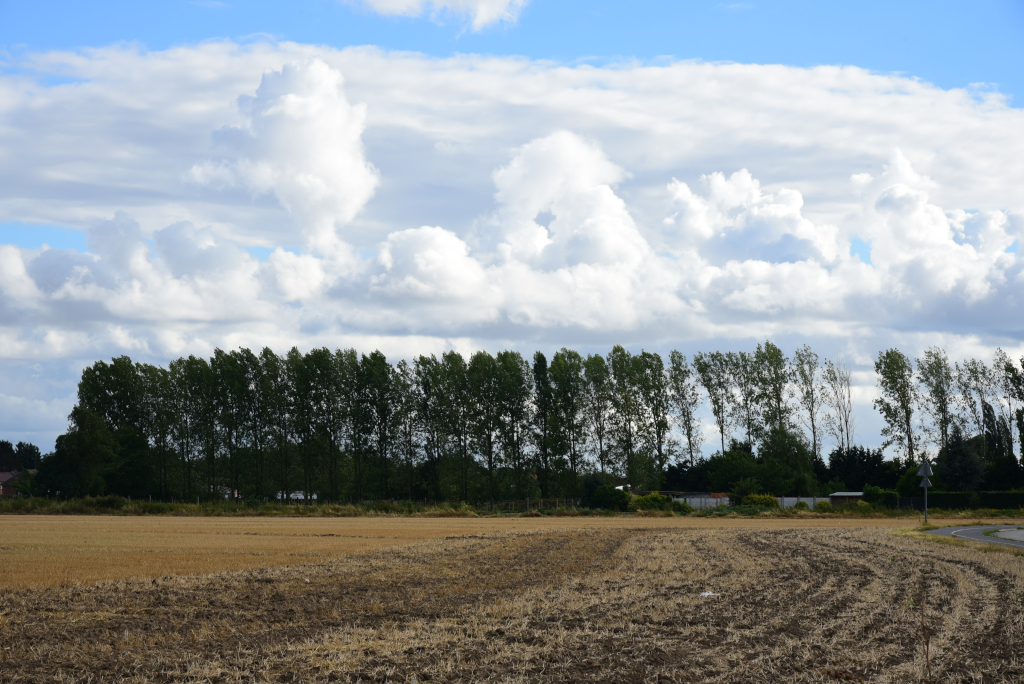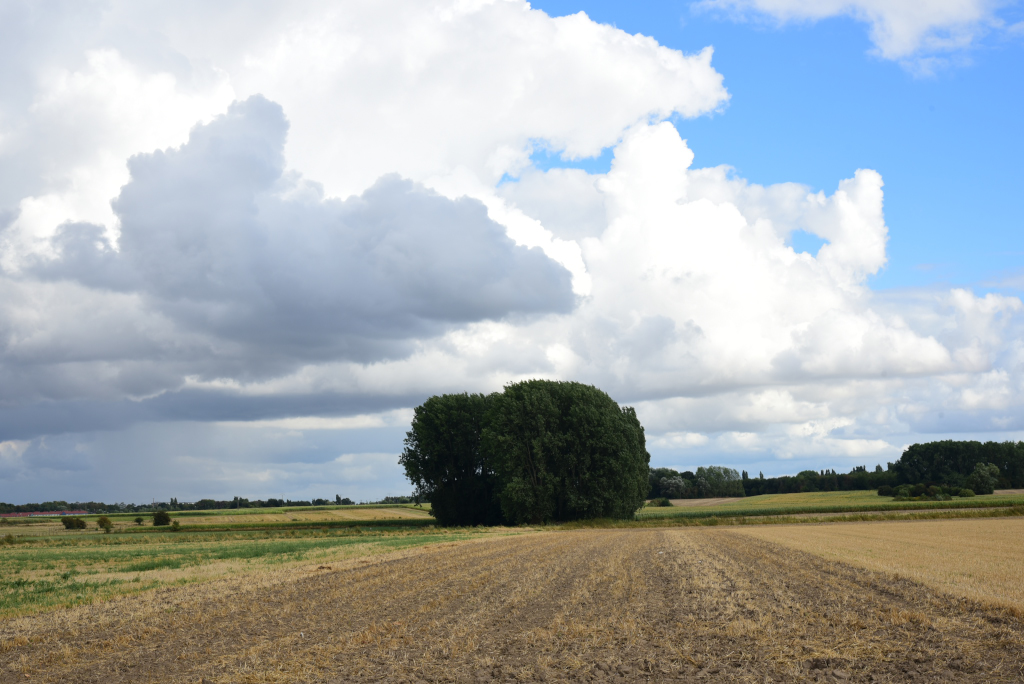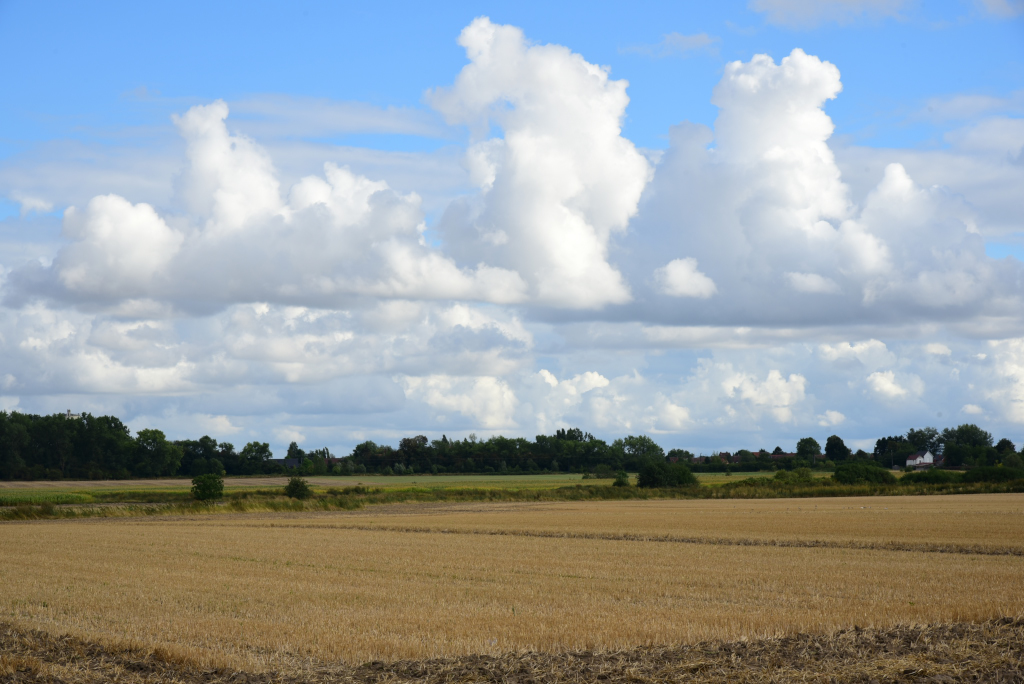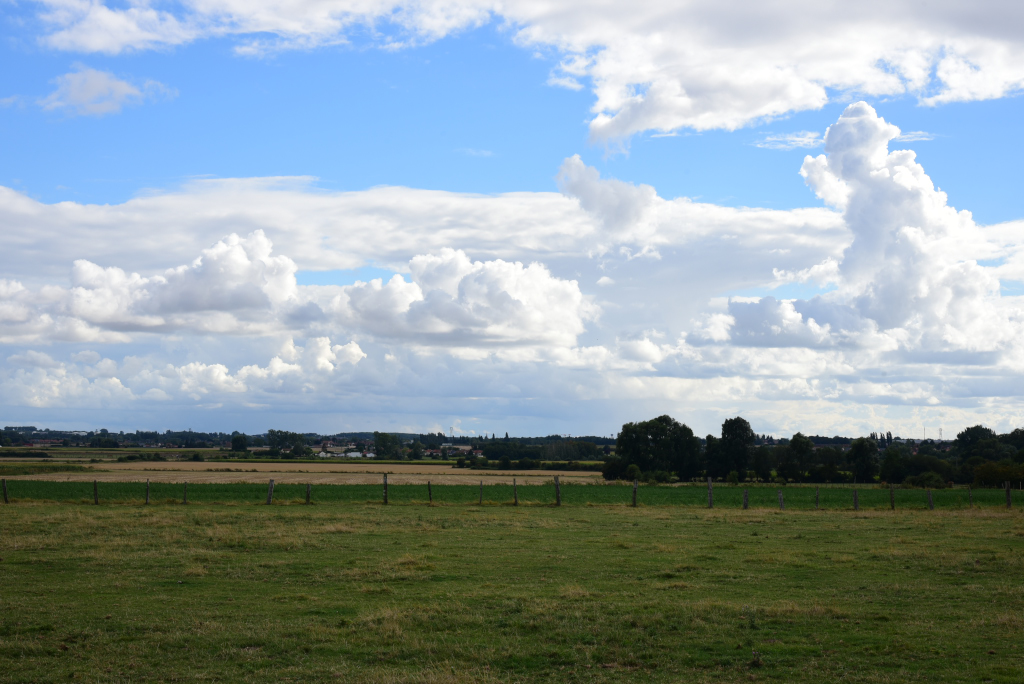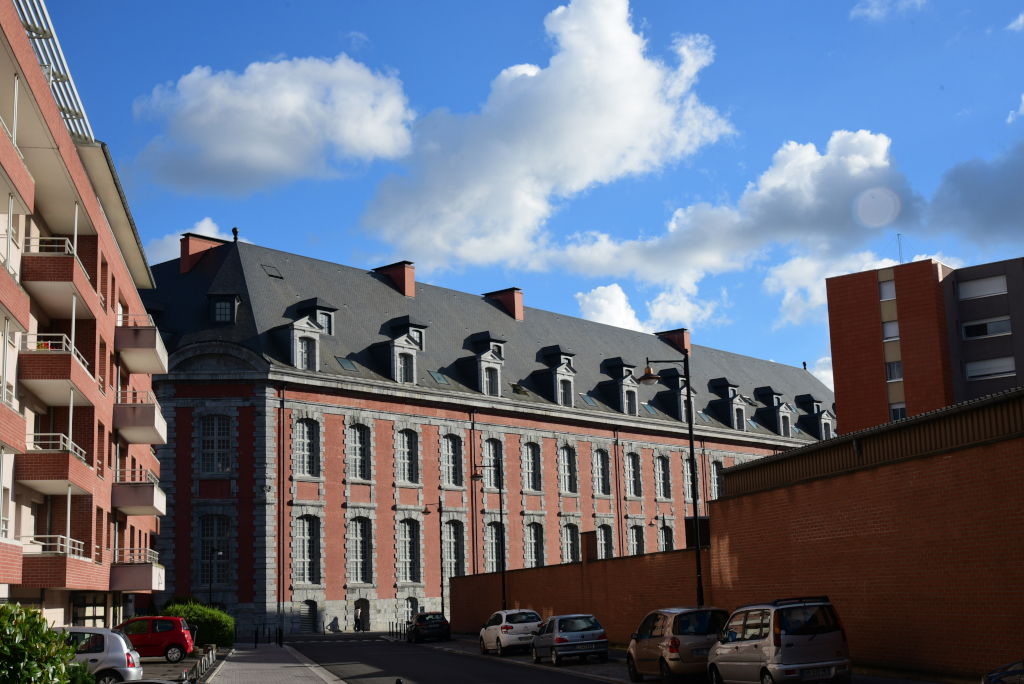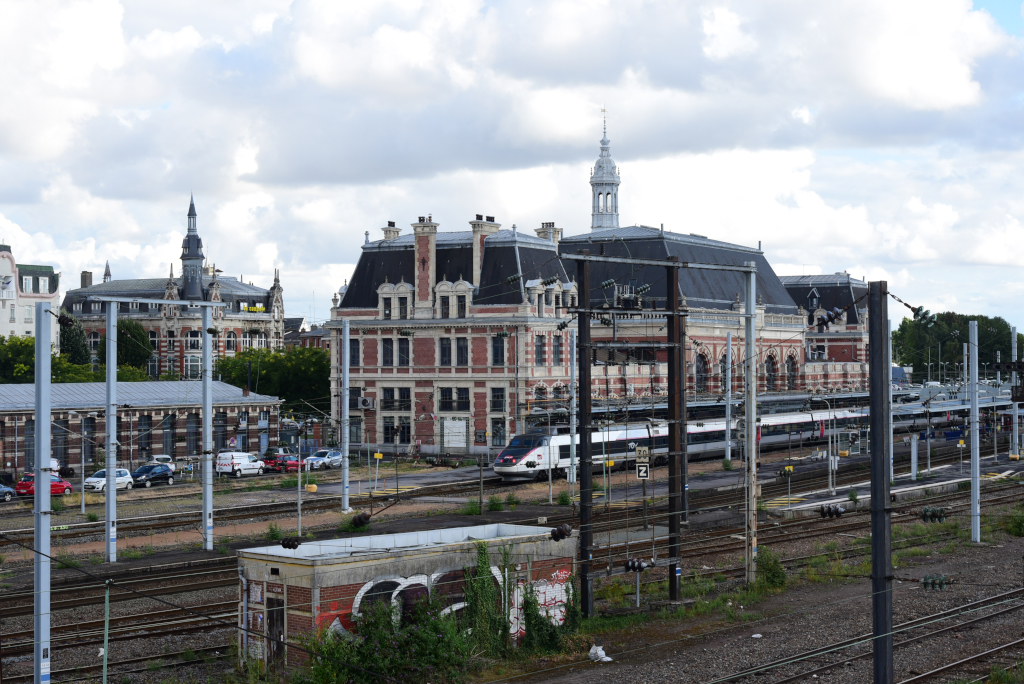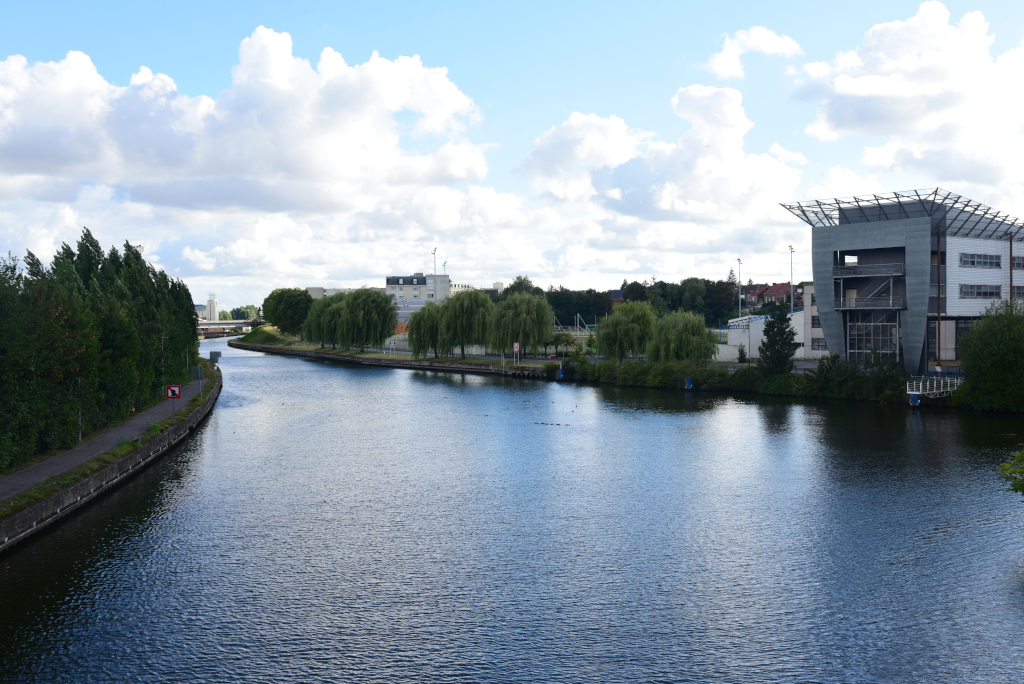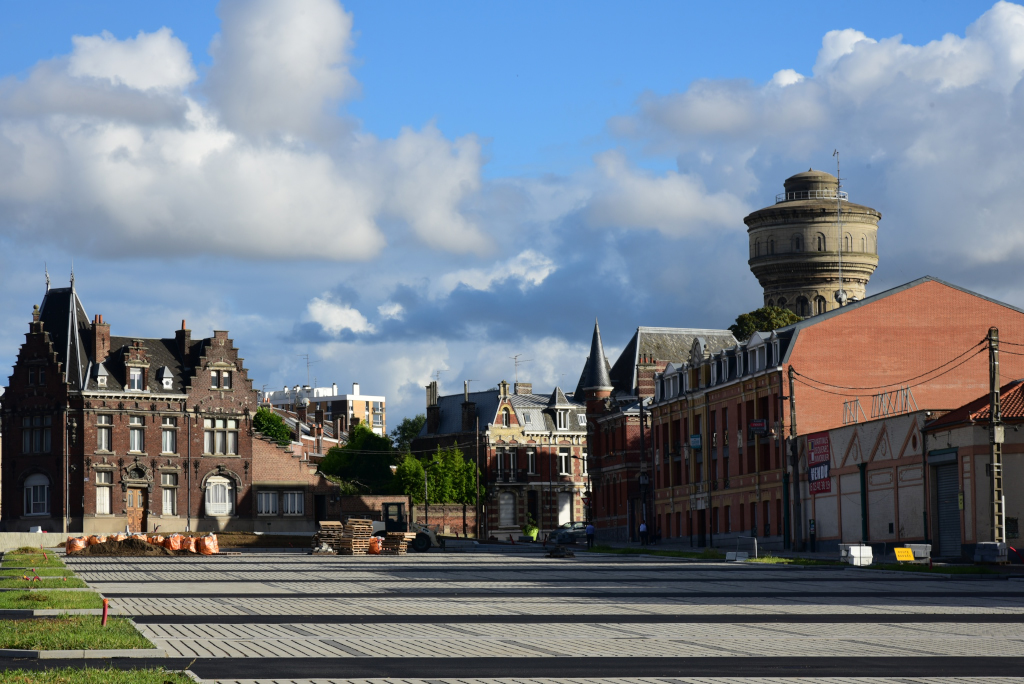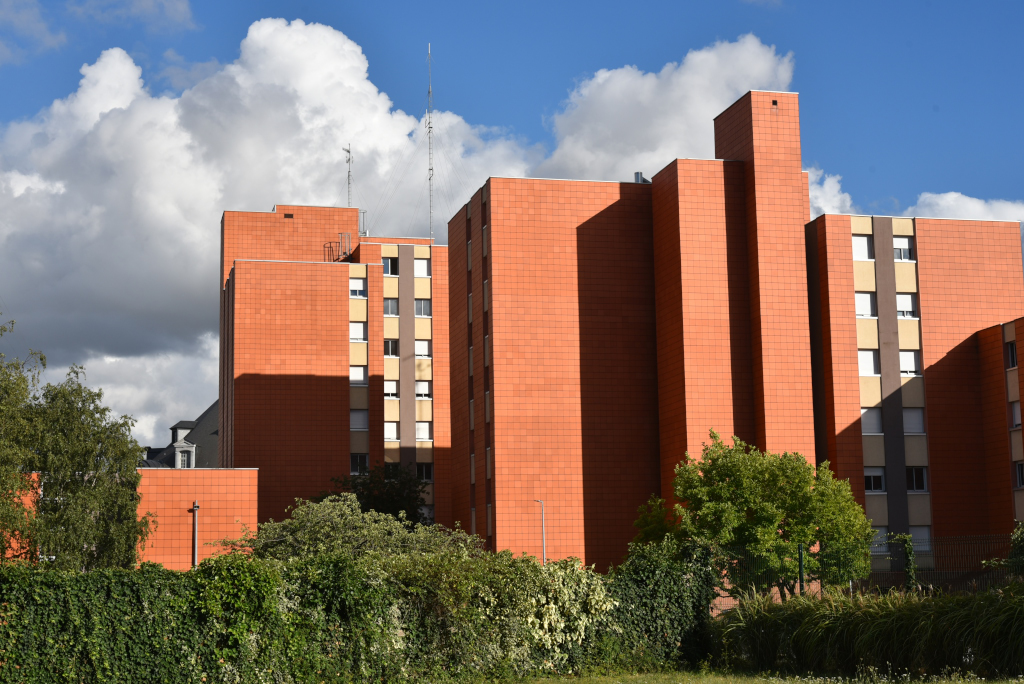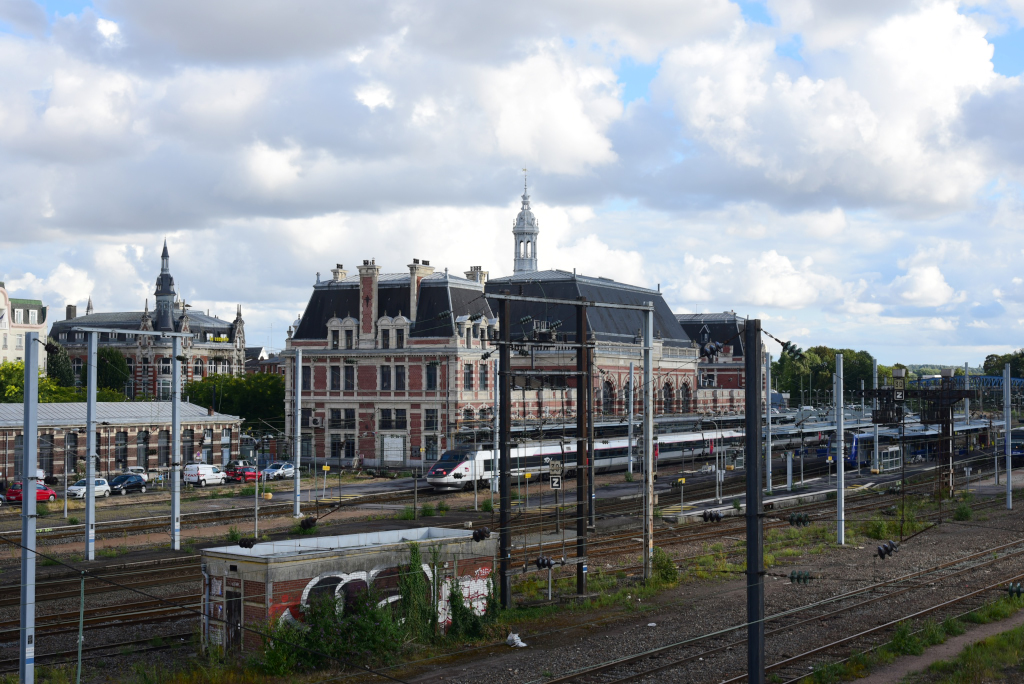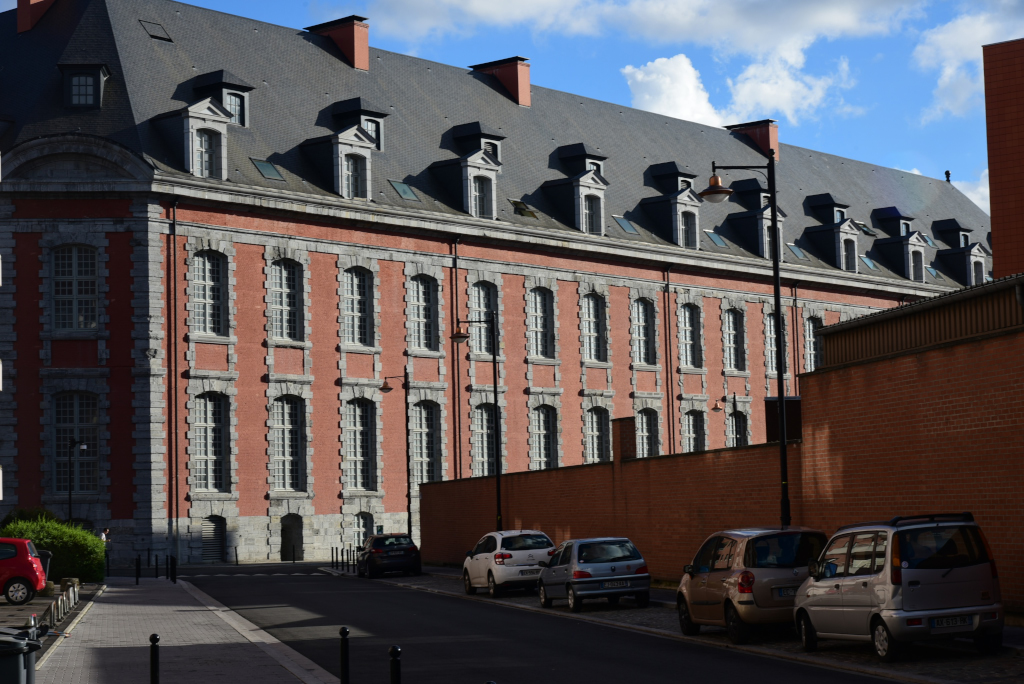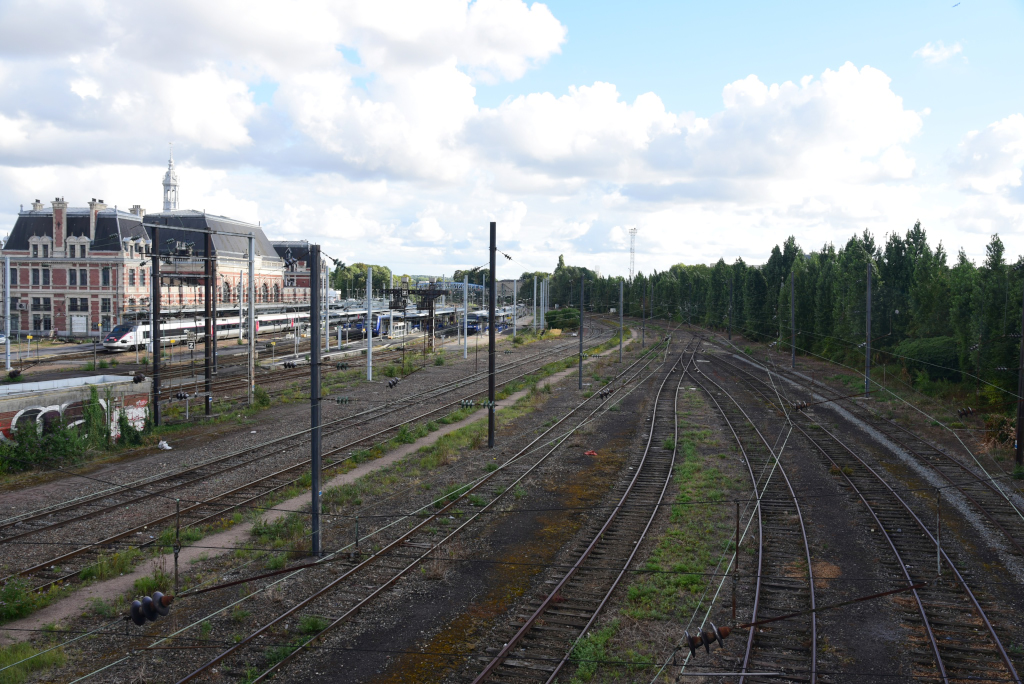August 13, 2018
I take the opportunity to explore the area to the west of the canal in Douai where I had been staying prior to setting off eastward toward Valenciennes. The skies threaten rain, but this does not prevent me from taking some last photos of the elegant 19th century brick and stone architecture that lines the alleys of the city, in some cases dating back far earlier, into the late Middle Ages.
The landscape further to the east is variable, including low-key towns in a largely agricultural setting, once vibrant industrial towns whose architectural legacy remains but seemingly little else, nestled among charming and often evocative country settings, the narrow, single-lane roads degenerating into paths amidst thick copses of trees and deep stands of wheat awaiting their maturity before emerging again in some small town.
Towns such as Râches and Lallaing may be insignificant in contemporary terms, but did have their brief moments of glory in the past. For example, Râches was made a seigniory by the Burgundian king Philip the Good, then a county by the Spanish king in the mid-17th century, and a principality by Louis XIV in 1701. Lallaing emerged at the beginning of the 12th century when the Countess of Flanders provided the written authorization to the abbey of Anchin to bring the water from the Scarpe from the “villa Lalain” to the water mill of the abbey. Lallaing was also associated at that time with a seigniory, which reached its peak in the 15th-16th centuries when its ruling family were suzerains of the Burgundians, then the Austrians and finally the Spaniards.
Further to the northwest of Valenciennes, the forest around me deepens as I approach the heart of the Parc Naturel Régional Scarpe-Escaut, and the heavily overcast skies that have been threatening rain all afternoon release a torrential deluge, leaving me completely soaked. Canals intersect the staid towns and their placid brick houses, the banks of the waterways typically rich in the somewhat untended greenery that gives rural France so much of its character.
The skies finally clear on my final leg to Valenciennes, a small city nestled on the flank of the the Ardennes hills that spill over from eastern Belgium into France, and sandwiched between significant green spaces, the Parc Naturel Régional Scarpe-Escaut to the northwest and the Parc naturel régional de l’Avesnois to the east. Once an esteemed city rich in history and renowned for its lace production, it did not survive the vagaries of World War II, and was almost entirely destroyed at that time. And yet, as we will see in the next blog post, Valenciennes is still rich in traces of its unique heritage.

